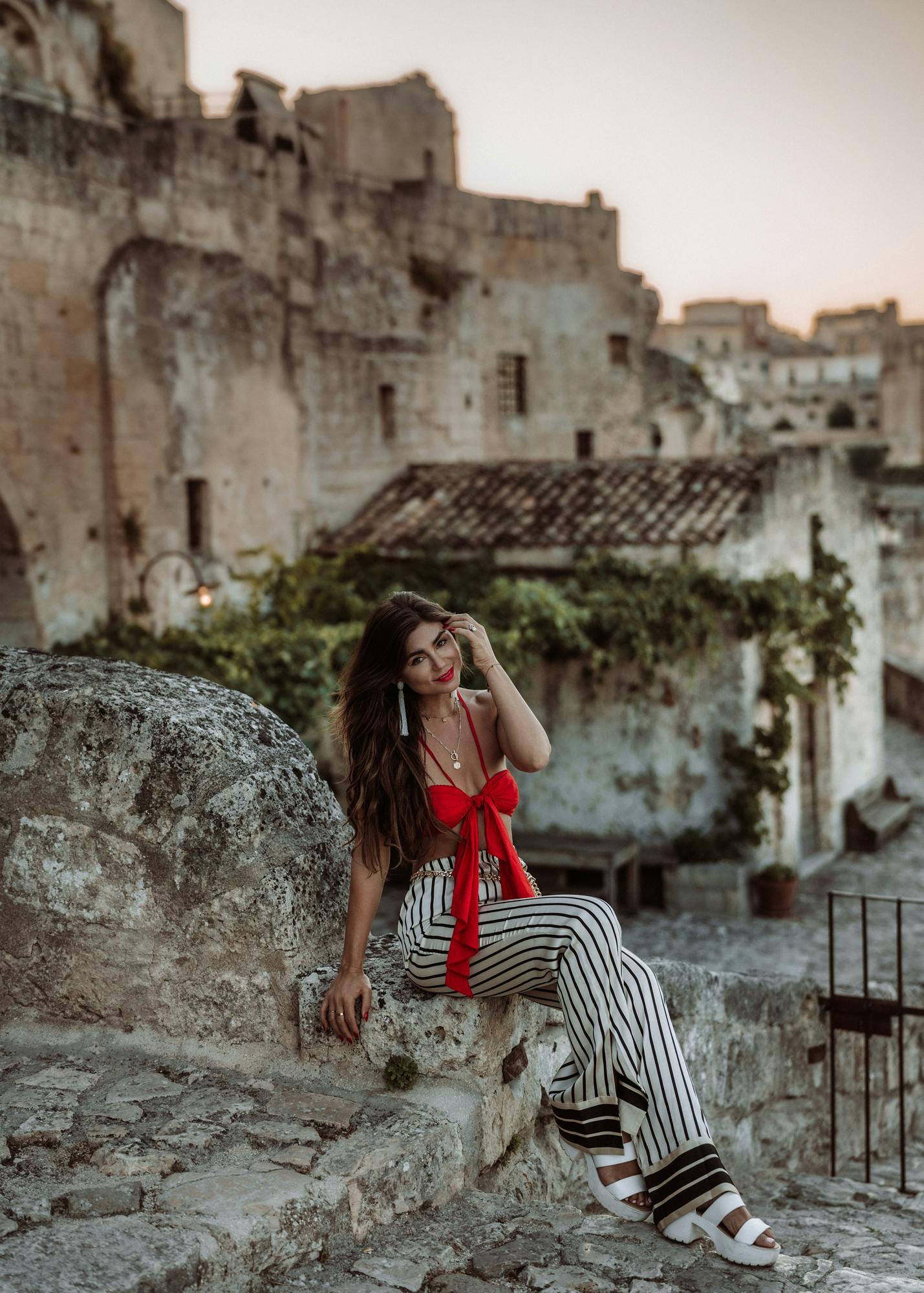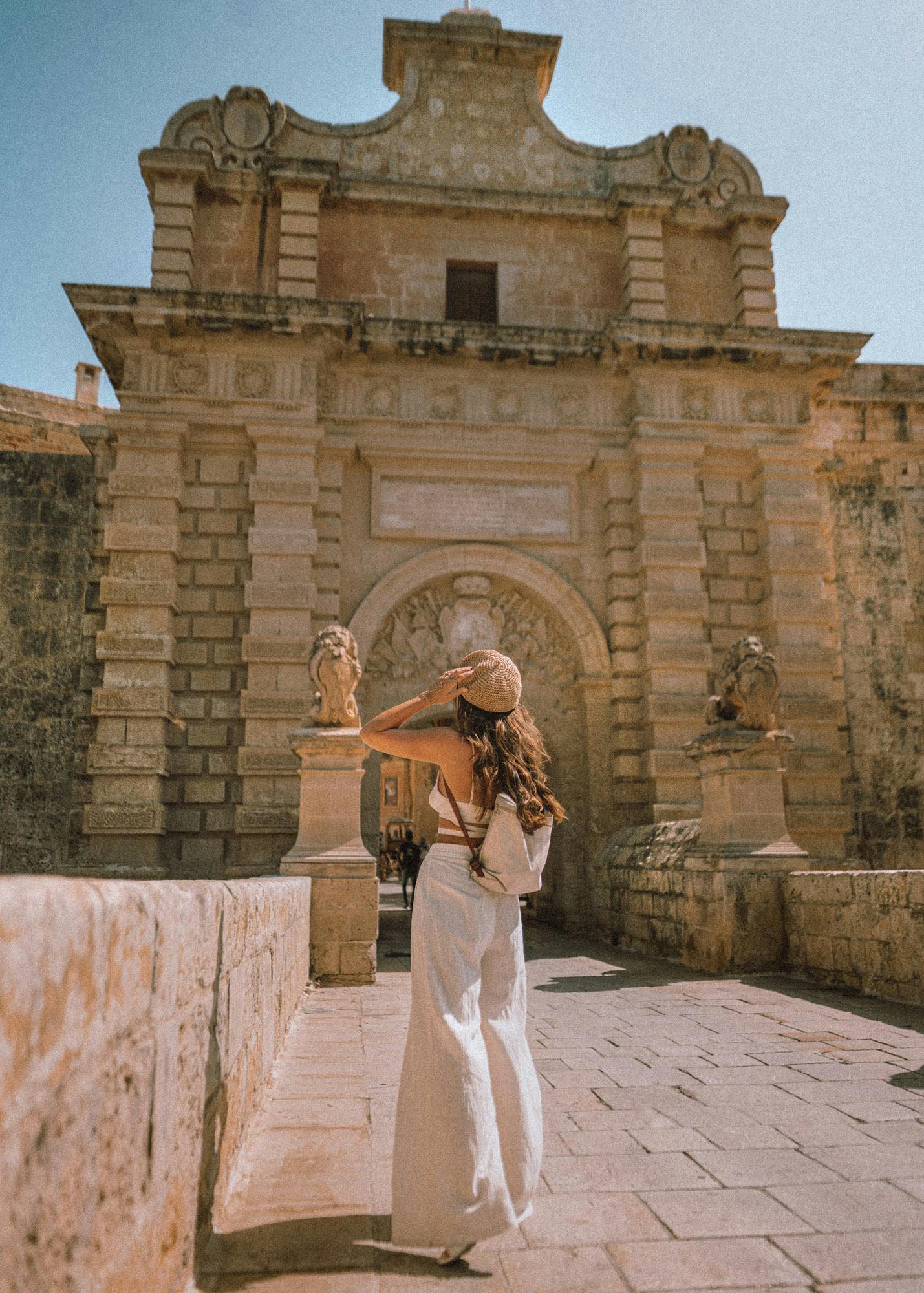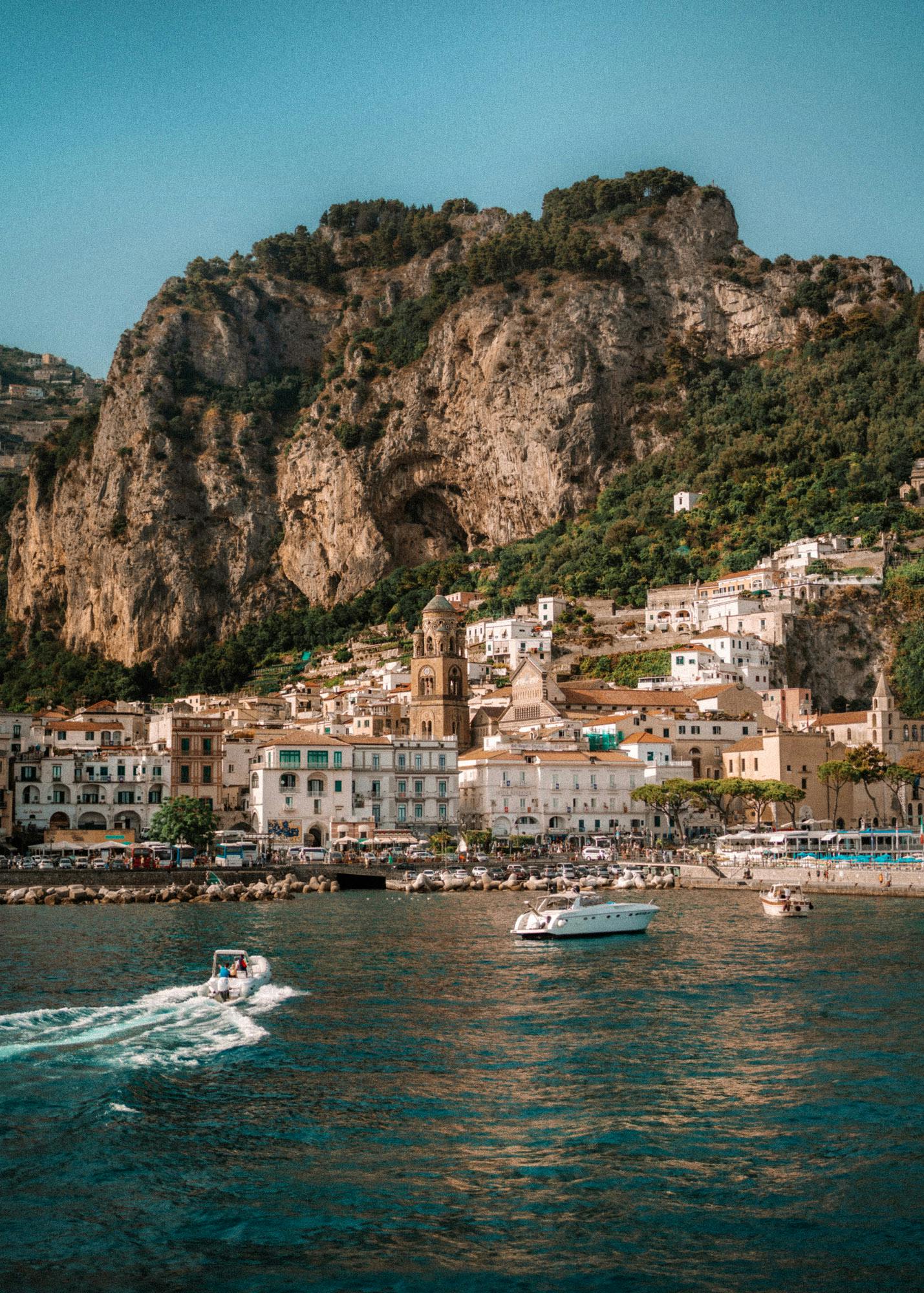Ultimate Puglia Travel Guide and 10-Day Itinerary: Exploring Southern Italy’s Hidden Gems
Puglia in Southern Italy continues to be one of the most underrated travel destinations in Western Europe - with ancient history, white sand beaches on the West and dramatic rock cliffs into the ocean on the East, endless countryside, and so much warmth and life, it's the kind of place that leaves your heart and soul full.
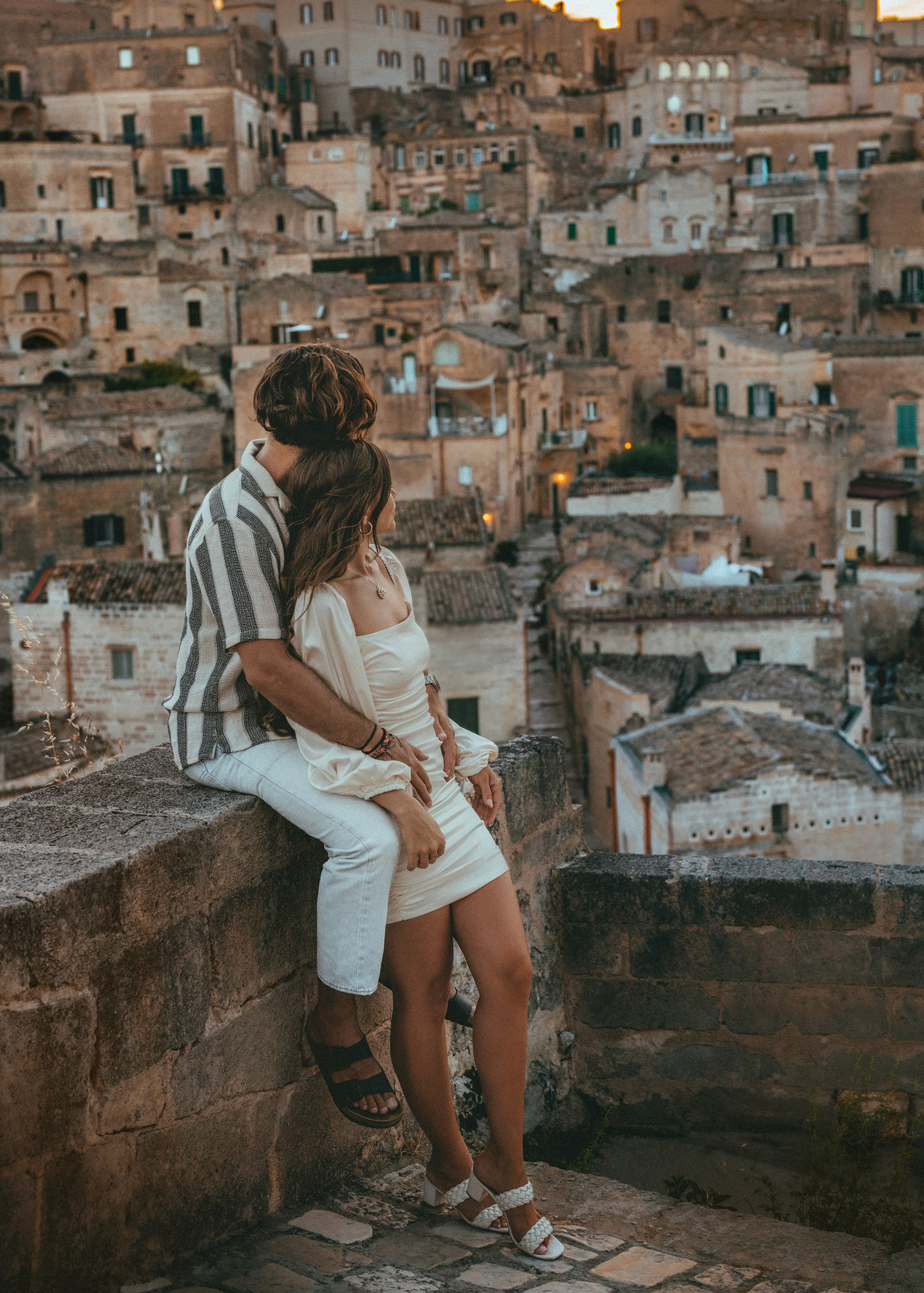

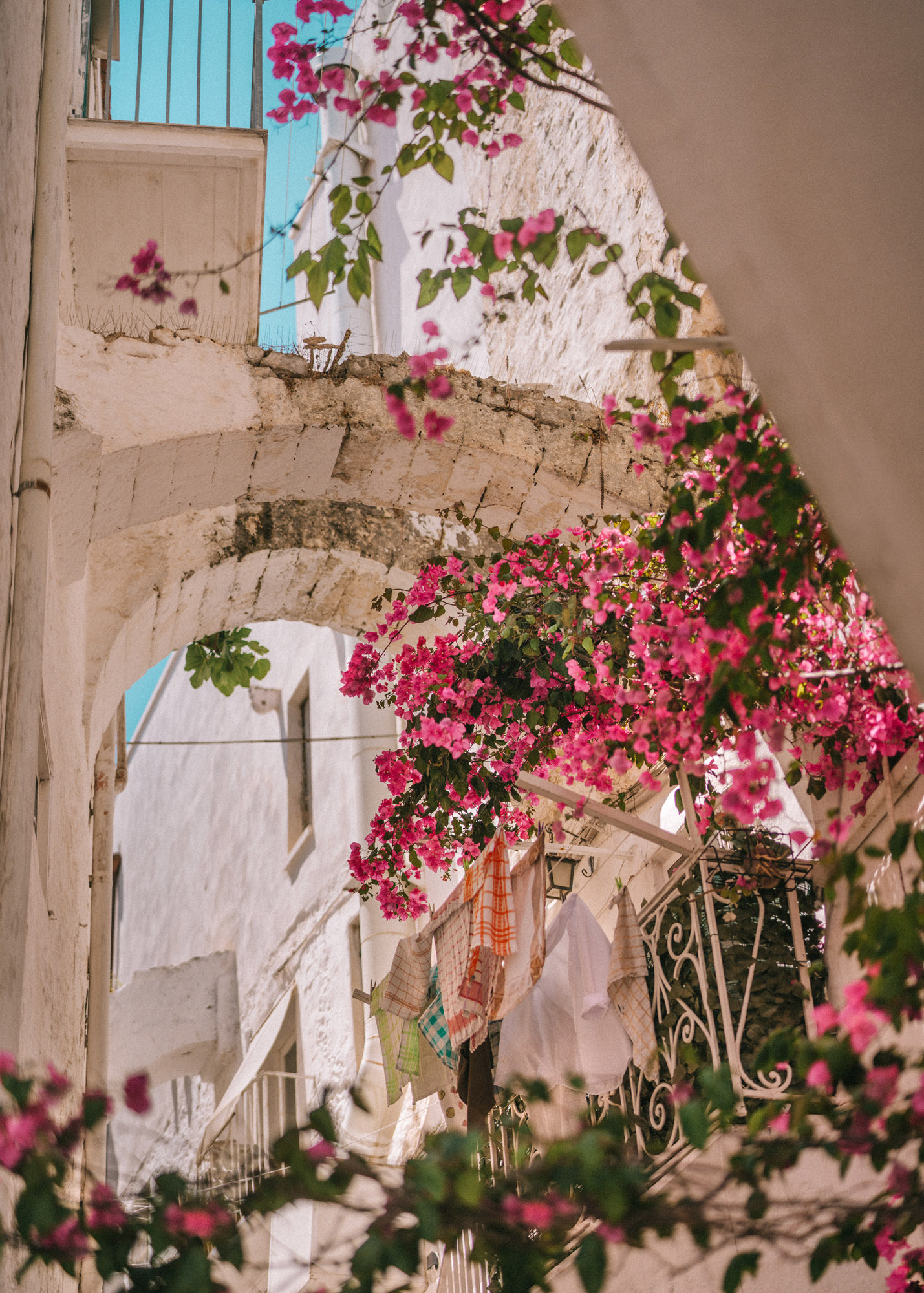

Puglia Basics: What to Know Before You Go
Located in the heel of Italy’s boot, Puglia is a region defined by dry-stone walls, olive groves that stretch to the horizon, and whitewashed towns perched on limestone ridges. It remains one of Italy’s best-preserved and least commercialized regions, where travel feels authentic, food is local by default, and the pace is deliberately unhurried. Before diving into your itinerary, here are the logistics that will help shape a smooth, immersive experience.
Getting There
Puglia is served by two main airports:
- Bari Karol Wojtyła Airport (BRI) - best for northern and central Puglia, including Matera, Alberobello, and Polignano a Mare.
- Brindisi Airport (BDS) - better suited for destinations in the south like Lecce, Ostuni, and the Salento peninsula.
Both airports are small, efficient, and connected to major European cities. If you're flying in from outside Europe, Rome or Milan often serve as the best international gateways, with connecting flights into Bari or Brindisi.
Getting Around
Puglia is not well connected by high-speed trains or seamless public transit, so renting a car is the most effective way to explore the region. This gives you flexibility to access rural masseria (farm stays), visit hidden beaches, and explore hill towns at your own pace. Roads are generally well maintained, but driving through historical centers is not recommended due to ZTL zones, extremely narrow streets, and limited parking.
To avoid tickets and unnecessary stress, plan to park outside of city centers and walk in.
If you'd rather not drive and are looking for a more curated and stress-free experience, your best option is booking a private itinerary with a reputable tour company like TravelLocal. By working with local guides, TravelLocal tours in Italy are crafted for you and include stops throughout the country, such as Puglia. Combining regional insight with all your travel logistics (think transportation, local guides, and accommodation), you can explore the beauty of Italy your way.

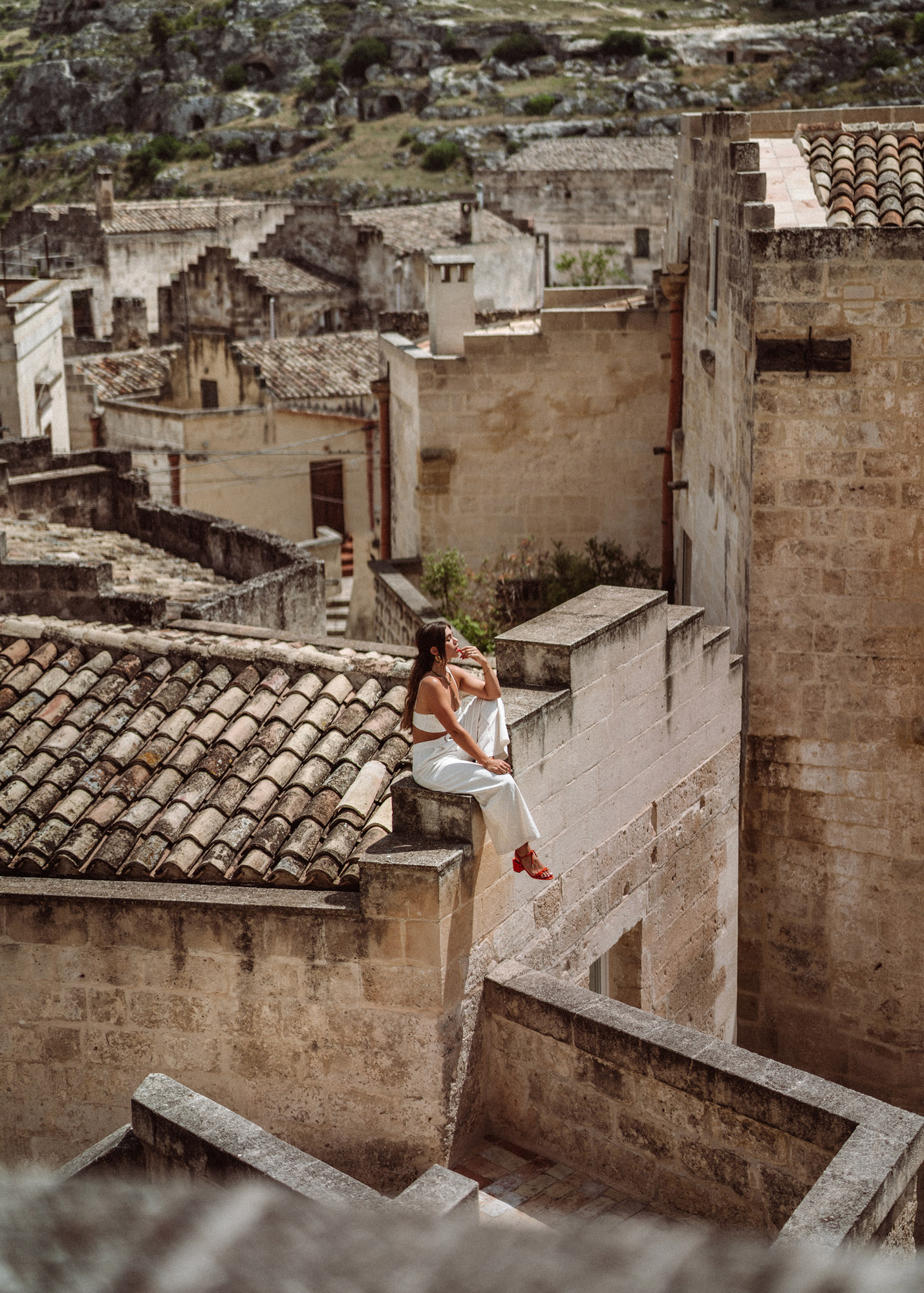
Travel Costs
Puglia is still significantly more affordable than other well-known regions like Tuscany or the Amalfi Coast.
- Meals: A generous lunch with wine rarely exceeds €25 per person at a trattoria. A high-quality prosciutto panini and an Aperol Spritz at a café might set you back €10-20 total.
- Accommodations: Boutique guesthouses and countryside trulli can range from €80 to €200 per night, with upscale masseria often including breakfast and access to a pool or private garden.
- Groceries: If you’re self-catering, high-quality ingredients are surprisingly affordable. For around $100, it’s easy to stock up on local cheese, pasta, produce, cured meats, and several bottles of regional wine.
Best Time to Visit
The shoulder seasons - late April to early June, and September through mid-October - offer the ideal balance of warm weather, open beaches, and fewer crowds. July and August bring peak summer energy and local festivals, but also higher temperatures, heavier traffic, and limited parking in beach towns. Winters are mild but quiet, with many rural hotels and restaurants closed for the season.
Language and Culture
English is spoken at most hotels and by younger locals, but knowing a few Italian phrases will go a long way - especially in smaller towns, more than anywhere else we have seen in Italy, Brandon's two years of Italian really helped us out here. Puglia retains a strong regional identity, and locals are deeply proud of their traditions, particularly around food. Meals are long, ingredients are local, and time is never rushed.
Matera: The Ancient Stone City
Technically Matera is not in Puglia, the city is just over the region border into Basilicata, but Matera is included in almost every Puglia Itinerary because of its proximity to the region, and because it is just incredible.

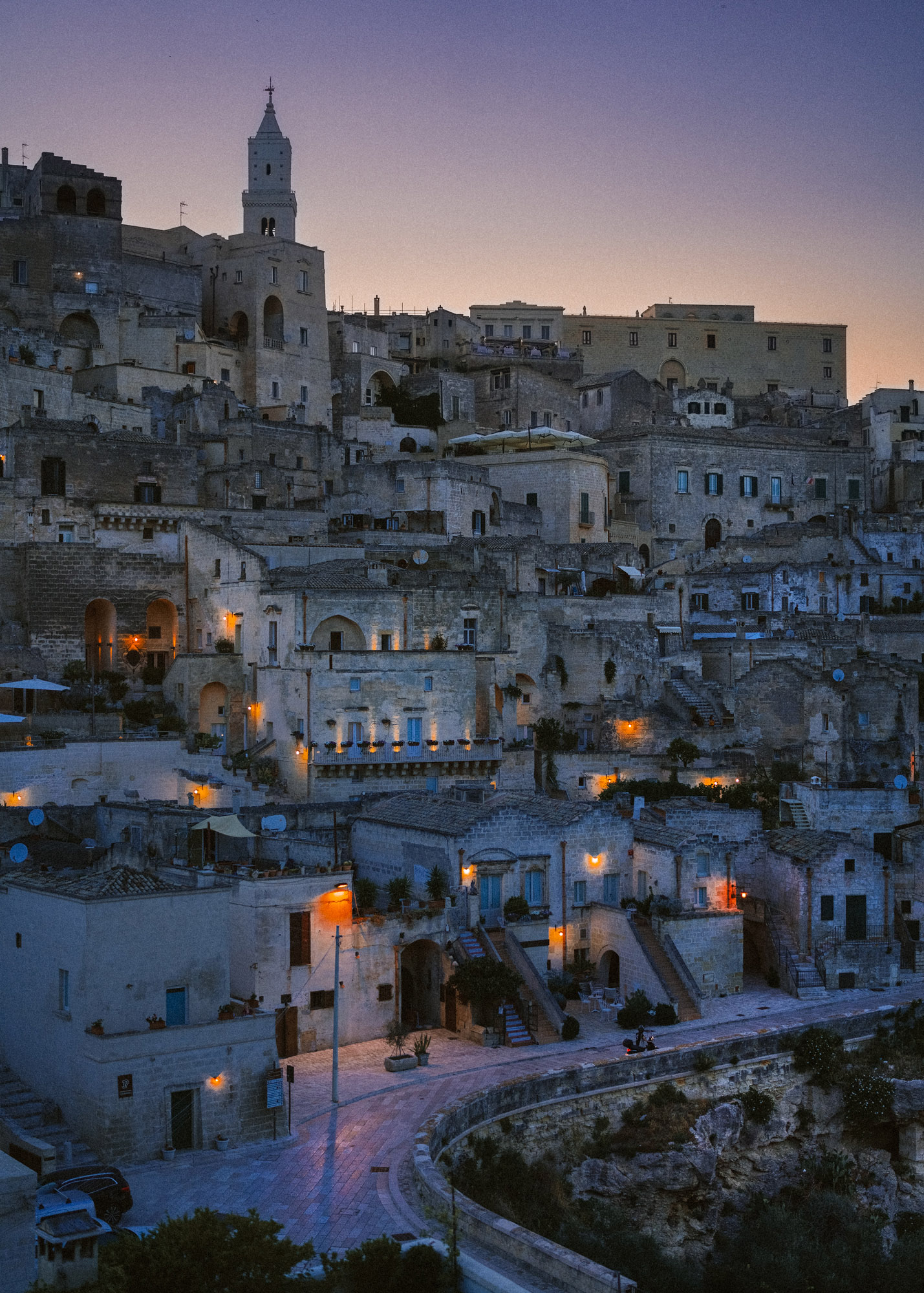
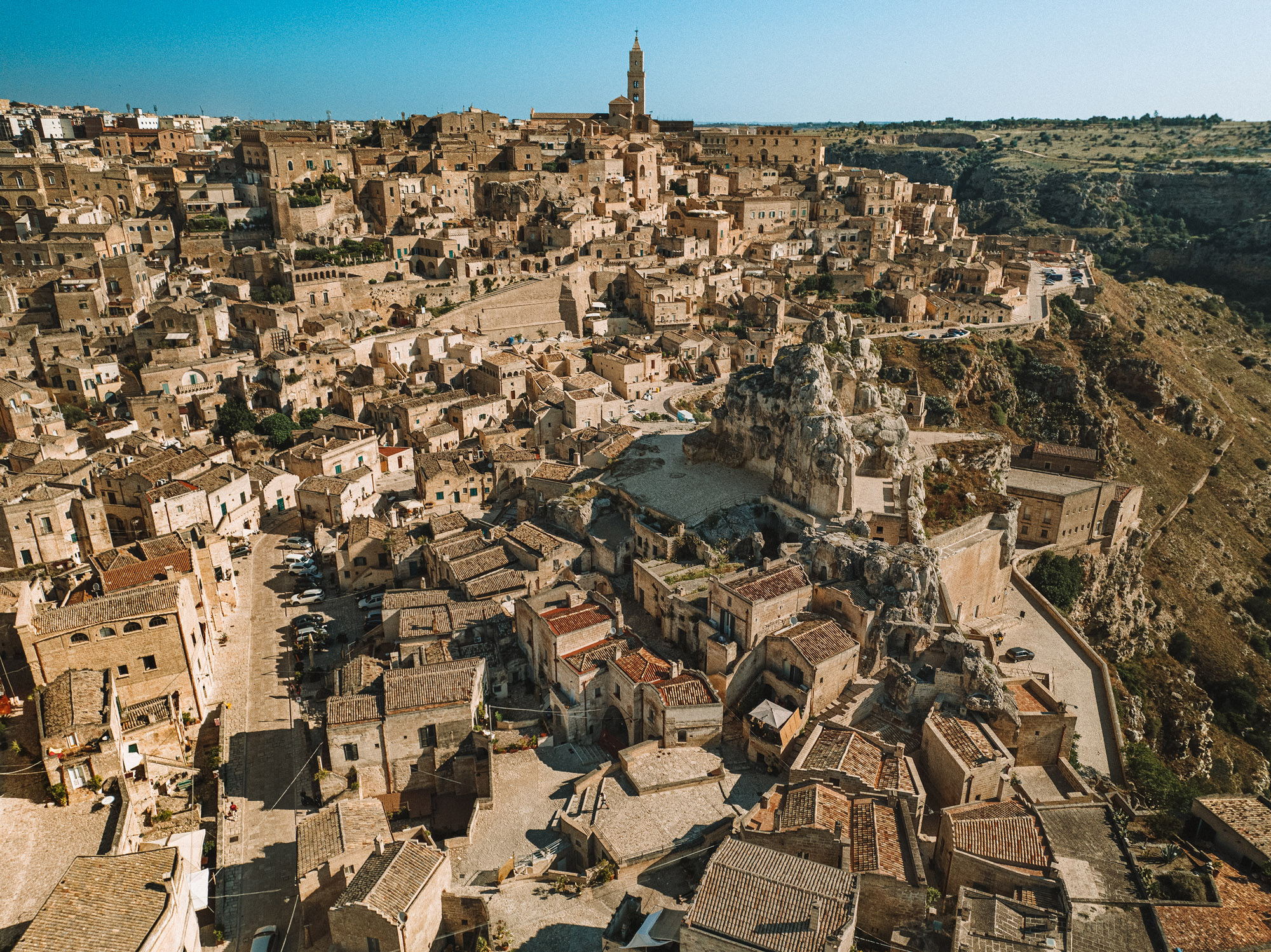
Parking & Getting Around
The city is carved into limestone ravines and its ancient cave dwellings (sassi) are now UNESCO-protected. Cars are not permitted in the historic center, so plan to park at Garage Damasco, located just outside the ZTL zone. Overnight parking costs approximately $20 per night, and with a hotel reservation, you can take a $10 shuttle into town with your luggage. Once checked in, you can walk everywhere - unless you’re traveling heavy, the shuttle is only needed once.
Where to Eat
- Trattoria del Caveoso: A classic lunch spot where you must try the pesto pasta.
- Al Casale: Known for its rich truffle ravioli and perfectly grilled lamb with garlic potatoes.
- L’Abbondanza Lucana: Ideal for dinner, especially on the patio. Their menu focuses on hyper-local ingredients, with a standout selection of meat-forward dishes.
- Panificio Paoluccio: Just outside of the stone center, this small Focaccia stand is famous for a reason - get a fresh piece in the morning and thank me later.
- Kiev Bistrot: A hidden gem with a terrace offering a spectacular view, a surprisingly excellent bottle of Prosecco, and memorable gnocchi and burrata.
- Conad Grocery Stores: A budget-friendly alternative for fresh, high-quality groceries. For $100, we purchased enough food (including produce, fresh pasta, cheeses, prosciutto, and four bottles of wine and beer) for three days.
Things to Do
- Hike across the ravine: Begin near Ristorante Baccanti and walk the 1.8 km (1.1 miles) uphill trail to view ancient prehistoric cave dwellings across from the main city. The best time is early morning or at sunset to avoid heat and crowds.
- Parco del Castello: For panoramic views and a taste of local architecture.
- Sunset on the Mound: One of the most photogenic moments of Matera.
- Aquatio Cave Luxury Hotel Spa: A subterranean spa set inside a cave. Their massage begins with an olive oil scrub and finishes with hydrotherapy baths and saunas; and it was easily one of the best spa experiences of my life.
Polignano a Mare: Cliffs and Seaside Charm
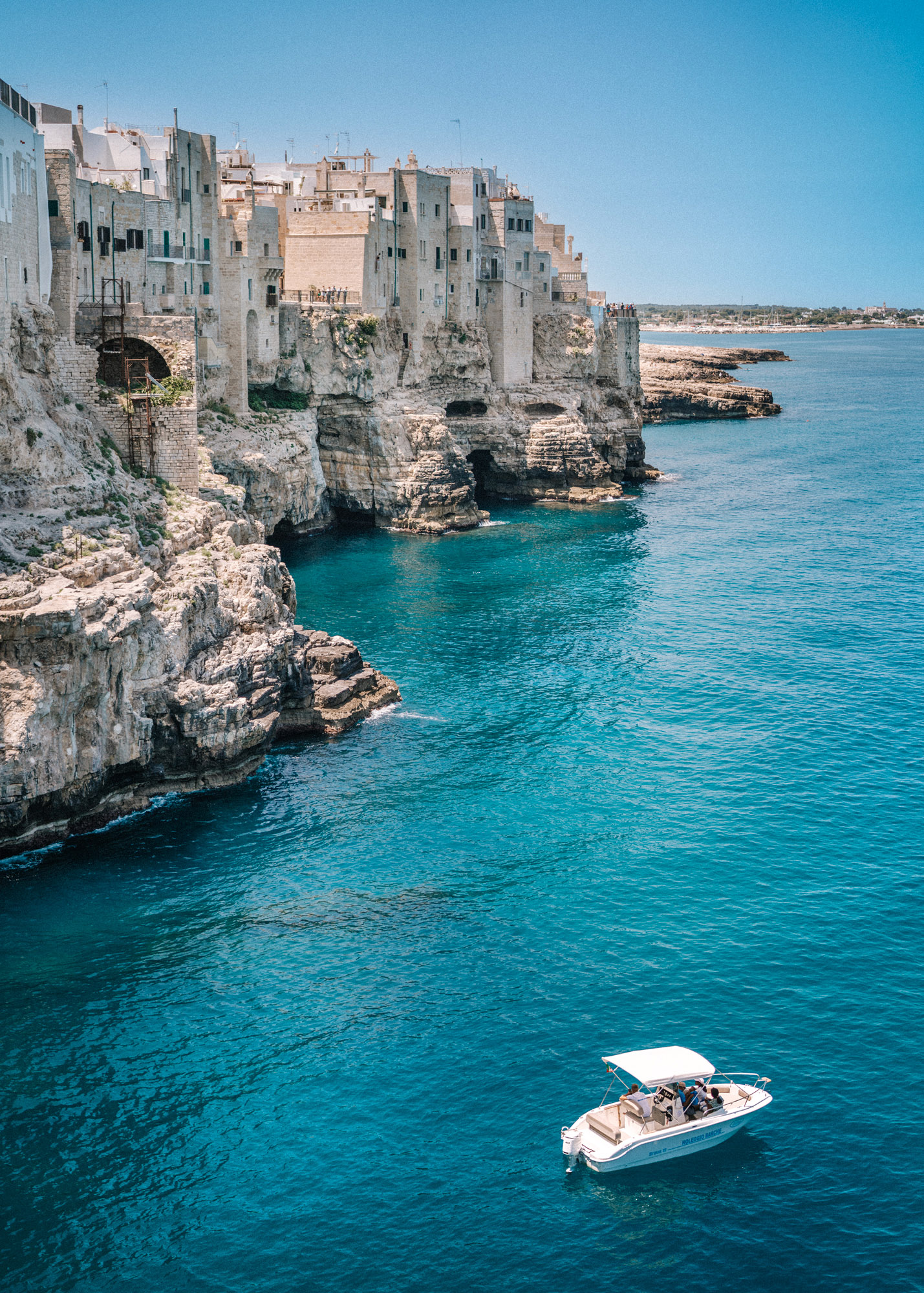
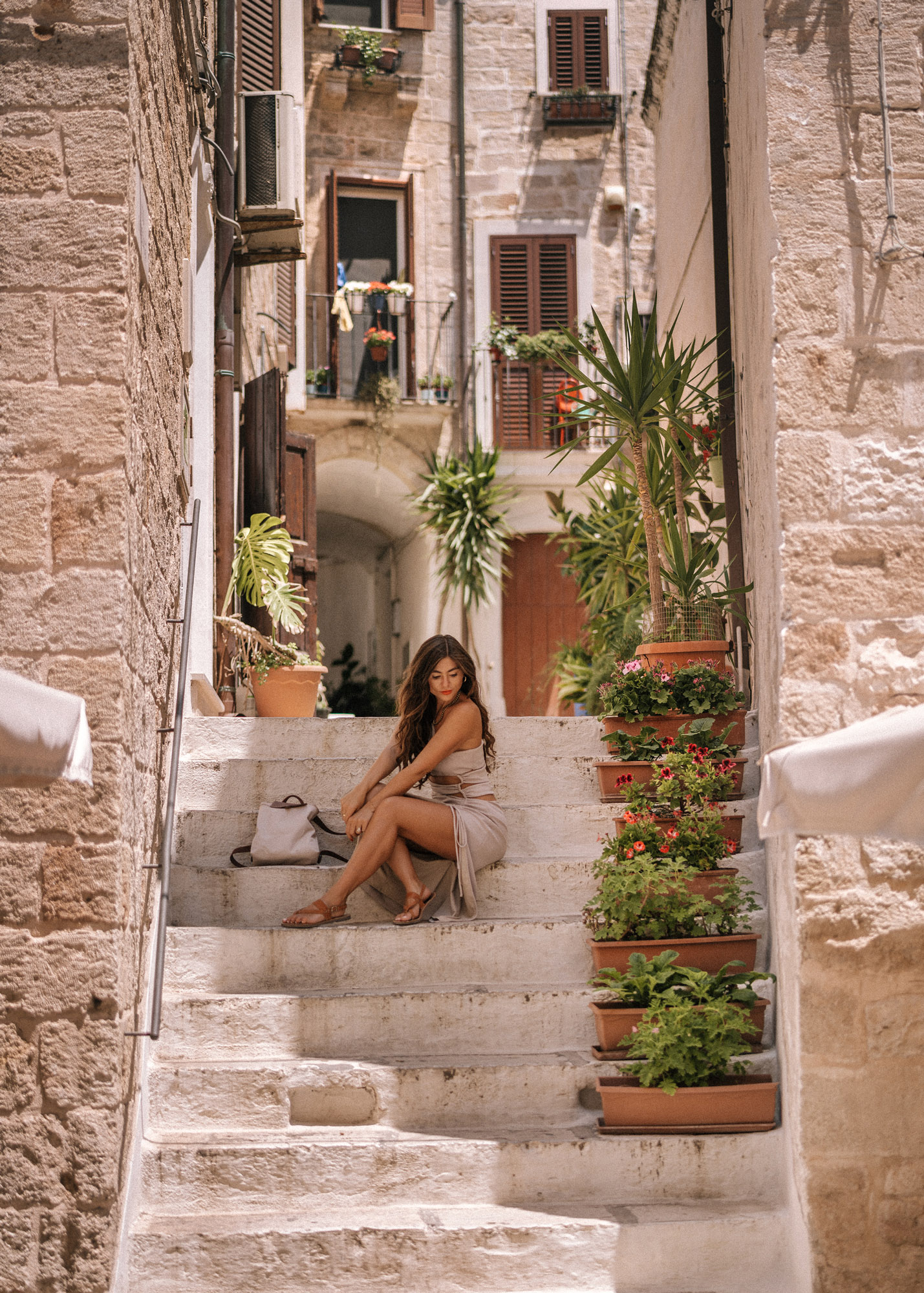
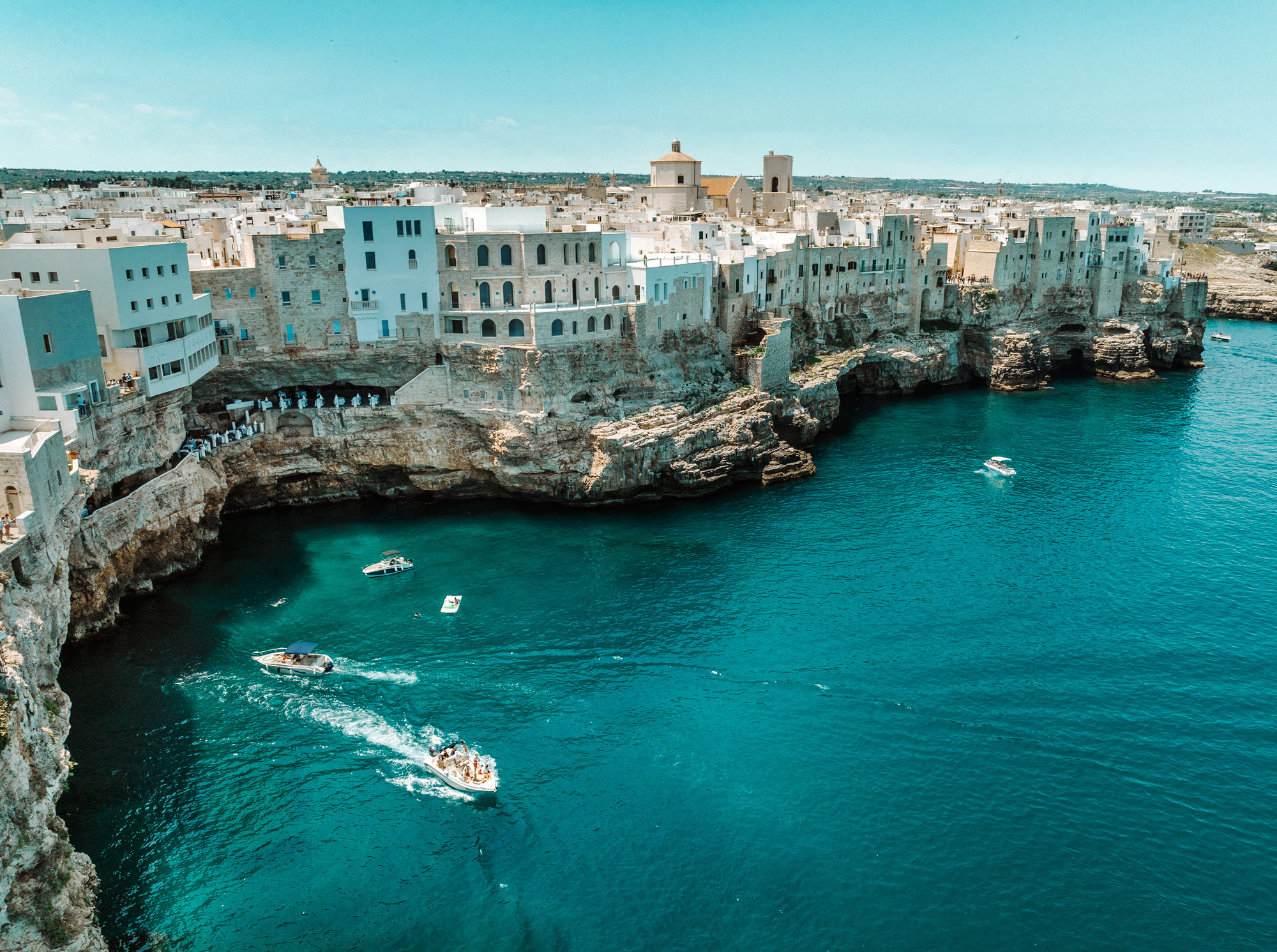
Perched on the edge of limestone cliffs that plunge into the Adriatic, Polignano a Mare is as photogenic as it is atmospheric. The town is a labyrinth of white-washed buildings, bougainvillea-draped balconies, and narrow alleys that open suddenly onto sweeping sea views. Poetry carved into stone slabs decorates stairways and facades throughout the old town - a quiet but ever-present homage to Italian lyricism and local pride.
The town’s charm lies not in grand monuments, but in moments: ordering a gelato as the sun begins to set, leaning over a clifftop terrace to catch a glimpse of swimmers below, or hearing the distant echo of a live guitarist reverberating off ancient stone walls.
Where to Eat
- Crema Café: A local favorite for espresso and pistachio gelato so creamy and nutty it’s worth a detour on its own. Small, unassuming, and perfect for a quick pause between beach walks.
- Olio Su Pane: This sidewalk café delivers comfort food at its best - casual, generous panini (try the prosciutto or the richly spiced meatball), paired with oversized Aperol Spritzes that feel celebratory without the price tag (€6). Ideal for a lazy lunch or early aperitivo.
- Grotta Palazzese: The town’s most iconic restaurant, built directly into a sea cave carved beneath the cliffs. The dramatic setting is unforgettable, especially at sunset, though the cuisine is secondary to the experience. Come for the view, not for culinary innovation.
Things to Do
- Cliff Beach (Lama Monachile): Perhaps the most photographed spot in Puglia, this tiny pebble beach is wedged between dramatic cliffs with an ancient Roman bridge spanning overhead. It’s ideal for a dip in the vivid turquoise water, but bring water shoes - the stones are tough on bare feet. Go early or late to avoid crowds.
- Cliff Jumping: For the adventurous, the town’s cliffs offer multiple safe-but-thrilling jumping spots, some of which are used in the Red Bull Cliff Diving World Series. Watch locals leap effortlessly or take the plunge yourself - at your own risk.
- Balconies and Viewpoints: Follow signs to “Balconata sul Mare” for one of the best panoramic lookouts. These terraces scattered throughout the town make it easy to pause and soak in the contrast between sun-bleached stone and impossibly blue sea.
Ostuni: The White City on the Hill
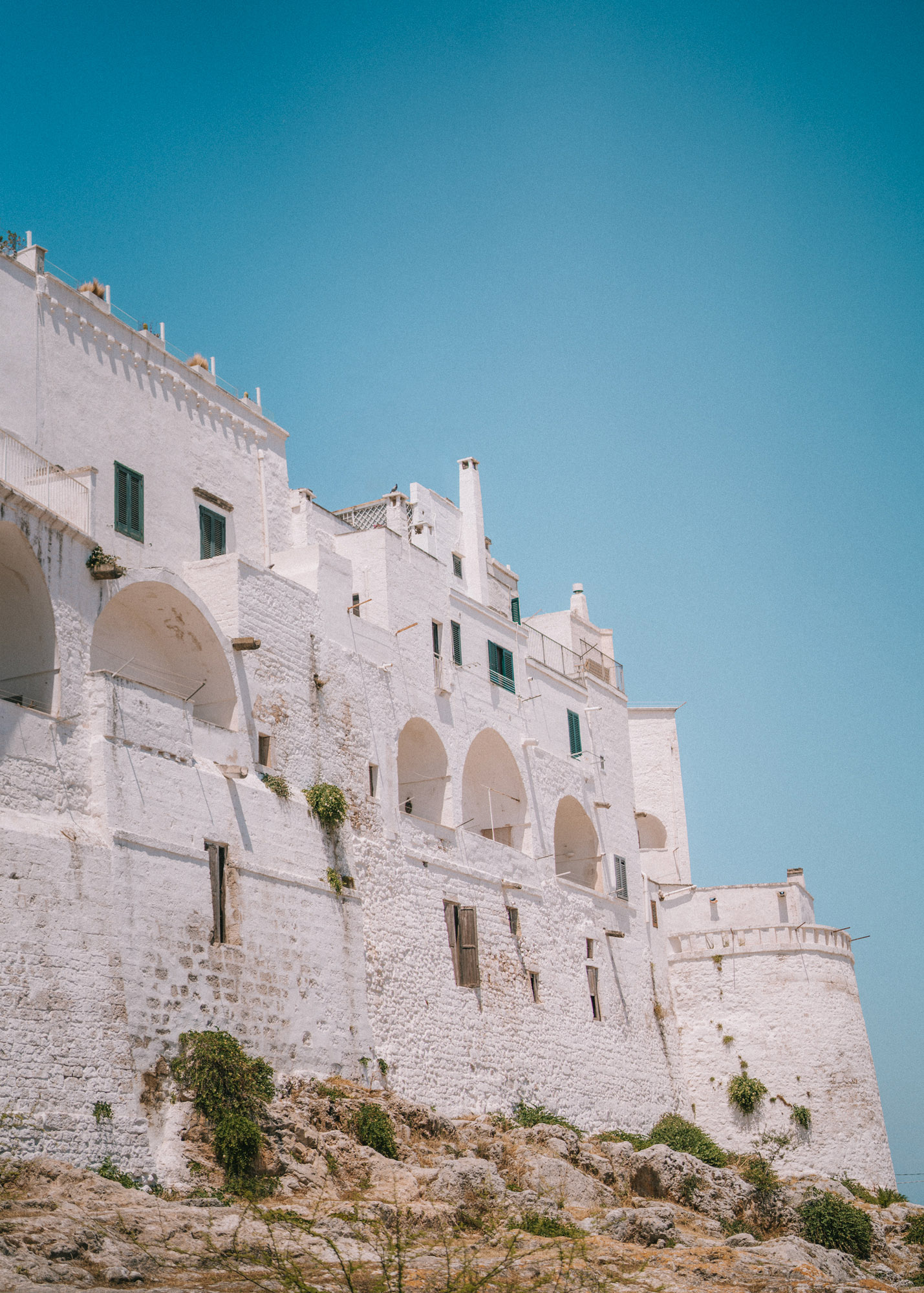
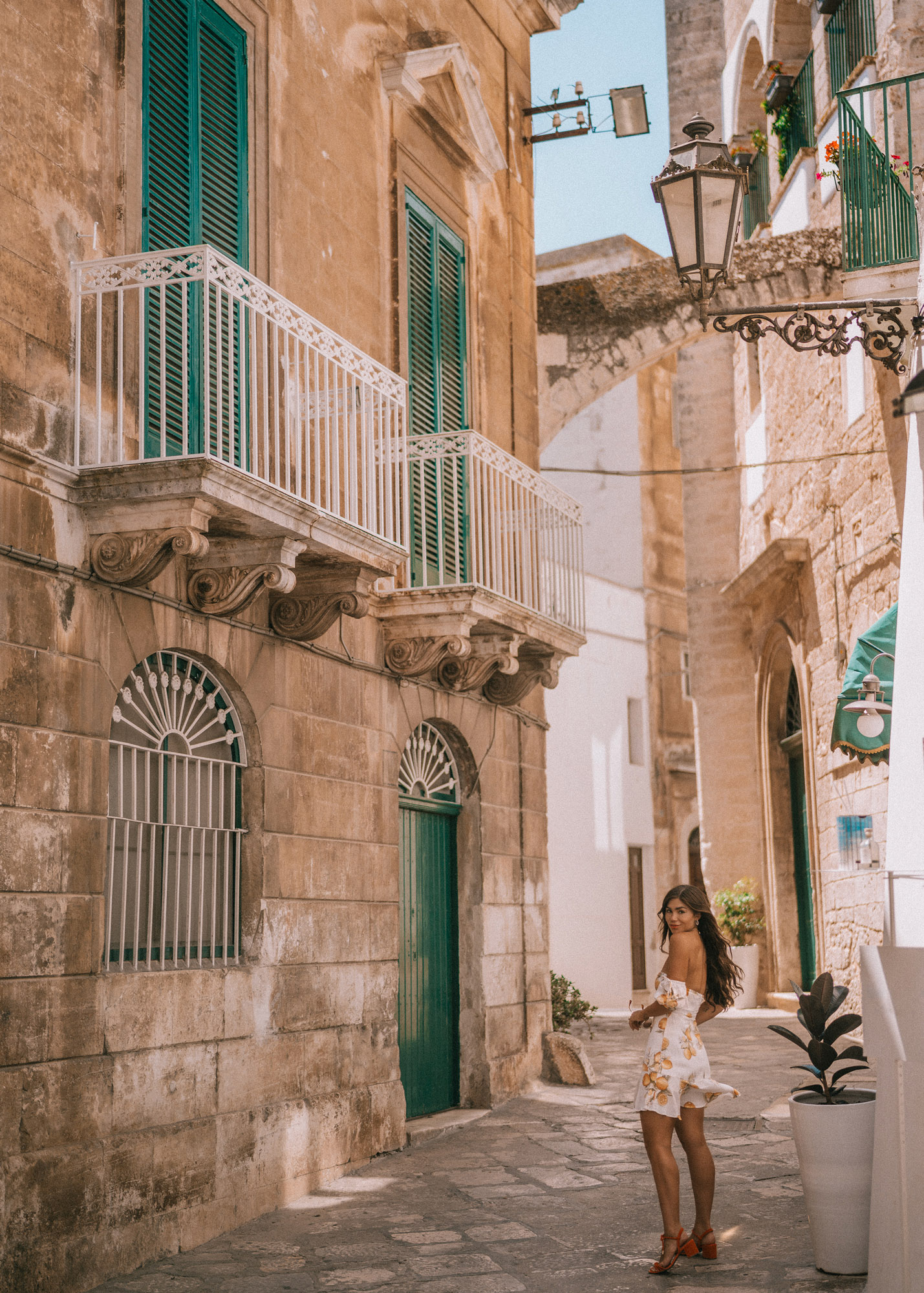
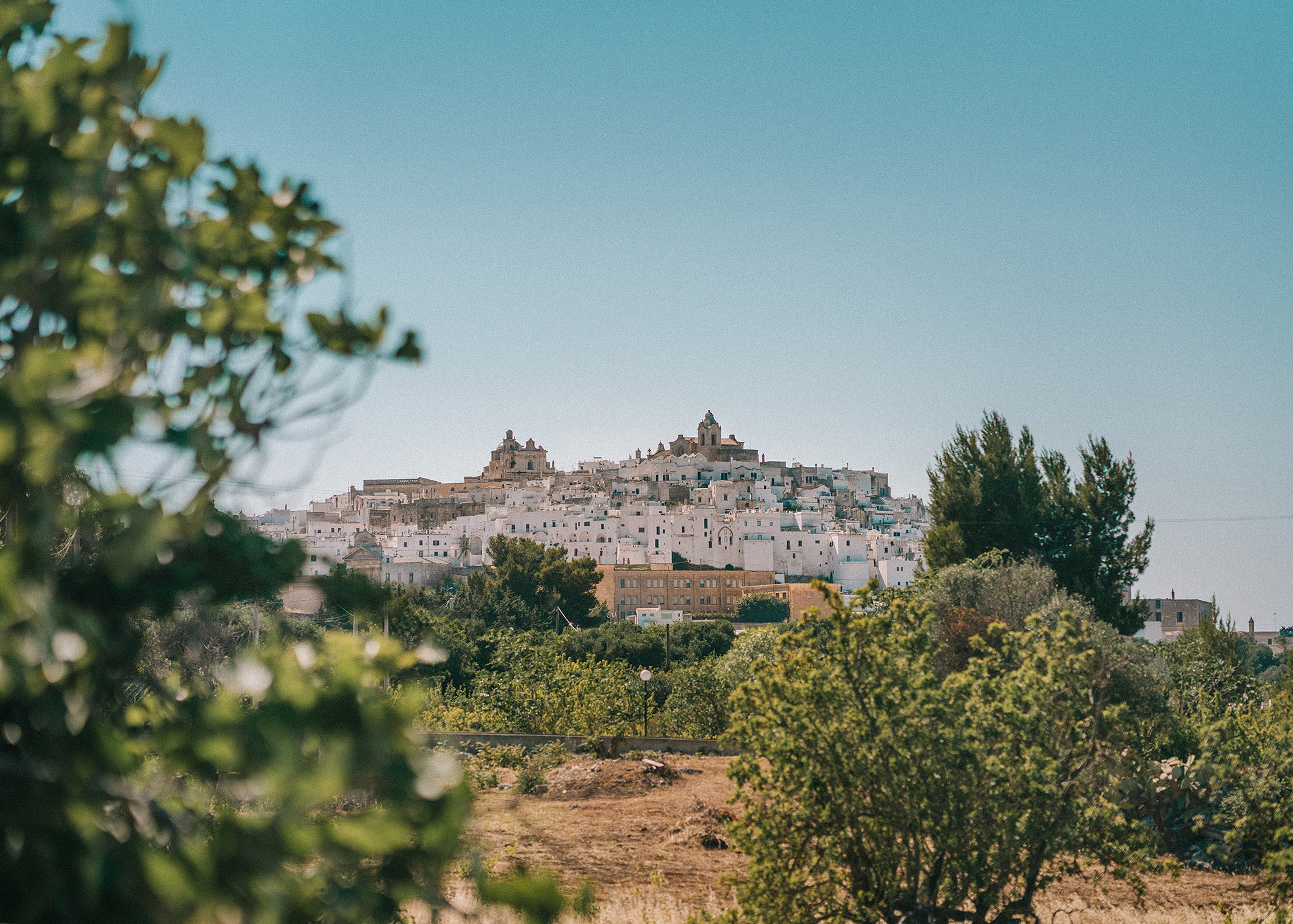
Known as La Città Bianca, Ostuni rises from the plains like a sun-bleached mirage, with layers of whitewashed homes stacked along winding stone alleys and wide terraces overlooking olive groves that roll toward the Adriatic. Perched high on a hilltop, Ostuni is less about major landmarks and more about slow wandering, impromptu aperitivi in hidden piazzas, and the golden light that wraps the town in warmth as the sun begins to set.
The town is lively in the evenings, when locals gather in the main square and open-air cafés spill into the streets. The historic center is pedestrian-friendly and built for aimless exploration - expect cobbled steps, wrought-iron balconies, and endless archways. It’s the kind of place where a casual walk turns into a full afternoon, punctuated by gelato breaks and photo stops.
Where to Eat:
- La Cremeria La Scala: A small gelateria tucked into a side street - their pistachio gelato is particularly rich and creamy.
- Madee Ostuni: Set right in the main square, this stylish but relaxed restaurant leans modern without losing its regional roots. Their seafood pasta is excellent, and the roasted potatoes (surprisingly memorable) are perfect with a chilled white from nearby Locorotondo.
- Zio Michele: A casual, unpretentious pizzeria favored by locals - great for a laid-back dinner after a long day of walking.
Punta Prosciutto: The Hidden Jewel Beach

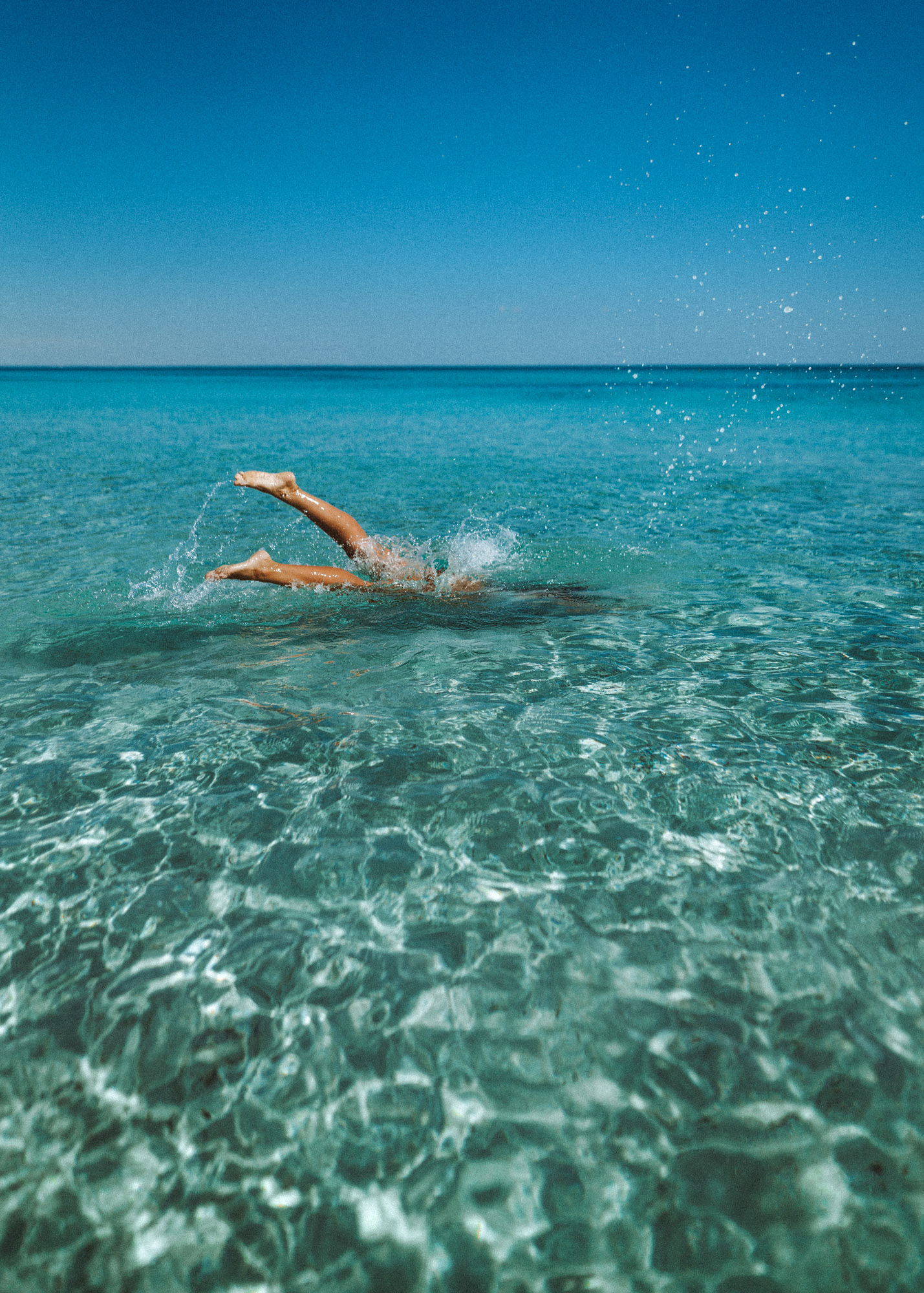
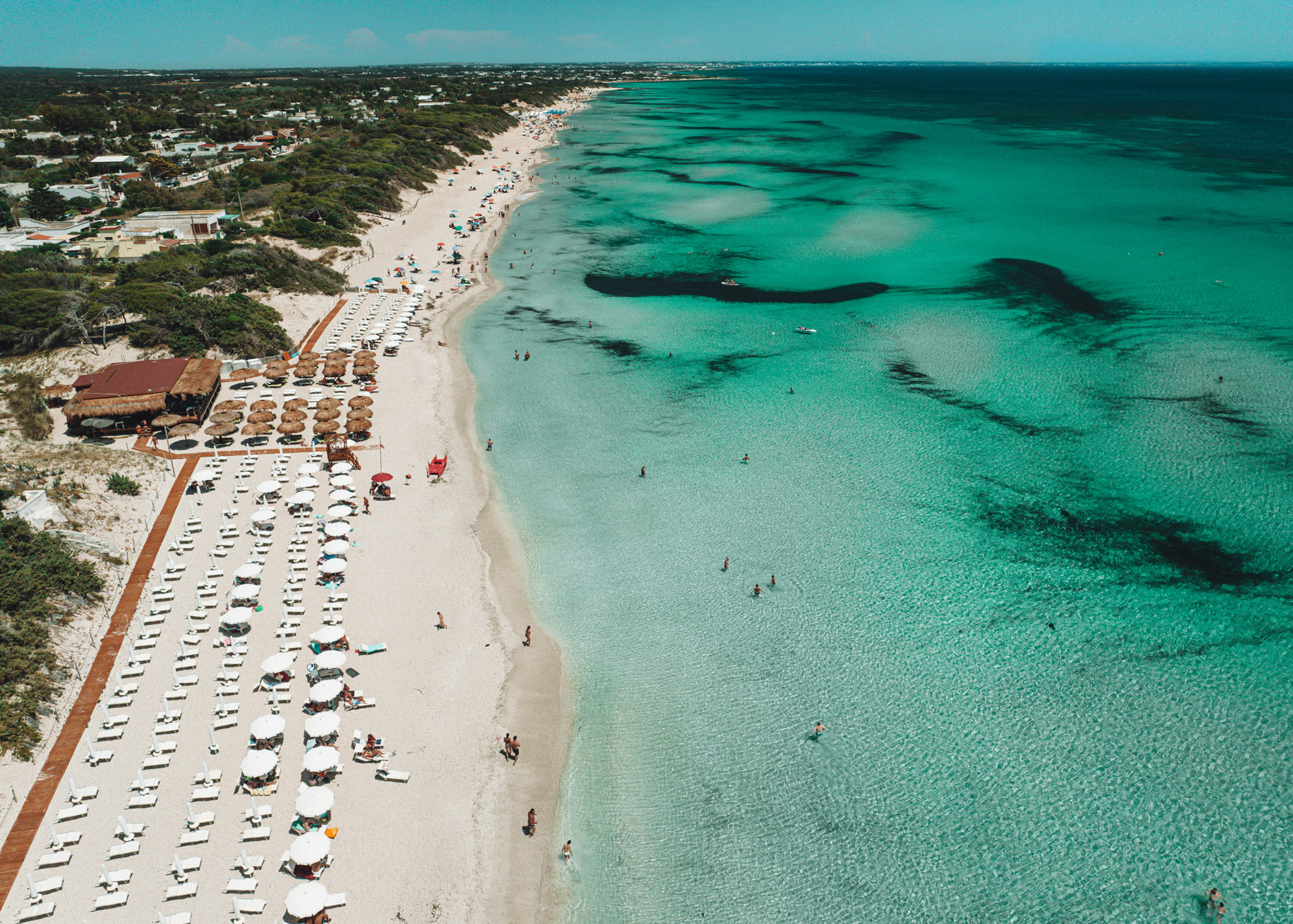
On the western side of the Salento peninsula, Punta Prosciutto is everything a Puglian beach should be - wide stretches of golden sand, shallow turquoise water, and an atmosphere that feels almost untouched. There’s no glamor here, just a laid-back rhythm that makes it easy to spend an entire day with salt on your skin and a spritz in your hand.
The water is remarkably clear and calm, making it ideal for swimming, floating, or wading out long distances. Beach clubs offer umbrella and chair rentals for around €20 for two people, and the area is dotted with small bars and kiosks serving cold drinks and simple food.
Where to Eat
- A small stand near the center of the beach sells prosciutto sandwiches for under $5 - they’re minimal, crusty, and completely satisfying.
- Further down the shoreline is a more formal beach restaurant with a broader menu - expect fried seafood, pasta, and cold beer for reasonable prices.
- Beers average around $4, and Aperol Spritzes are consistently €6, making it easy to settle in and stay all day.
Local History
If the weather cooperates, walk to the nearby Sarcofagi del Re - ancient marble tombs tucked just off the beach. These early archaeological relics are sometimes covered by sand and invisible, but in the right conditions, they’re fully exposed and striking in their simplicity. It’s a subtle reminder of how much history lies just beneath the surface in this part of Italy.
Alberobello: Trulli and Timeless Streets
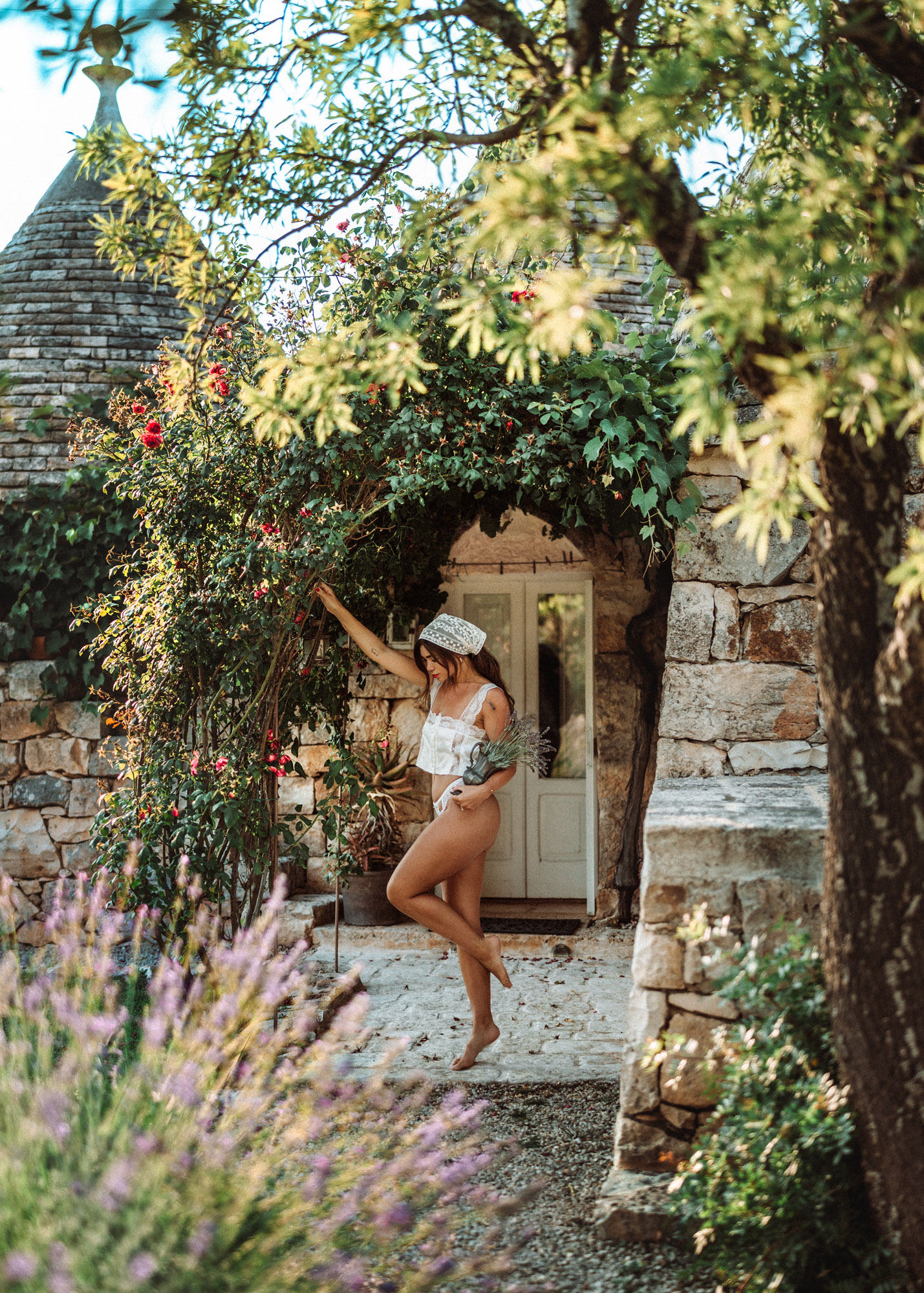
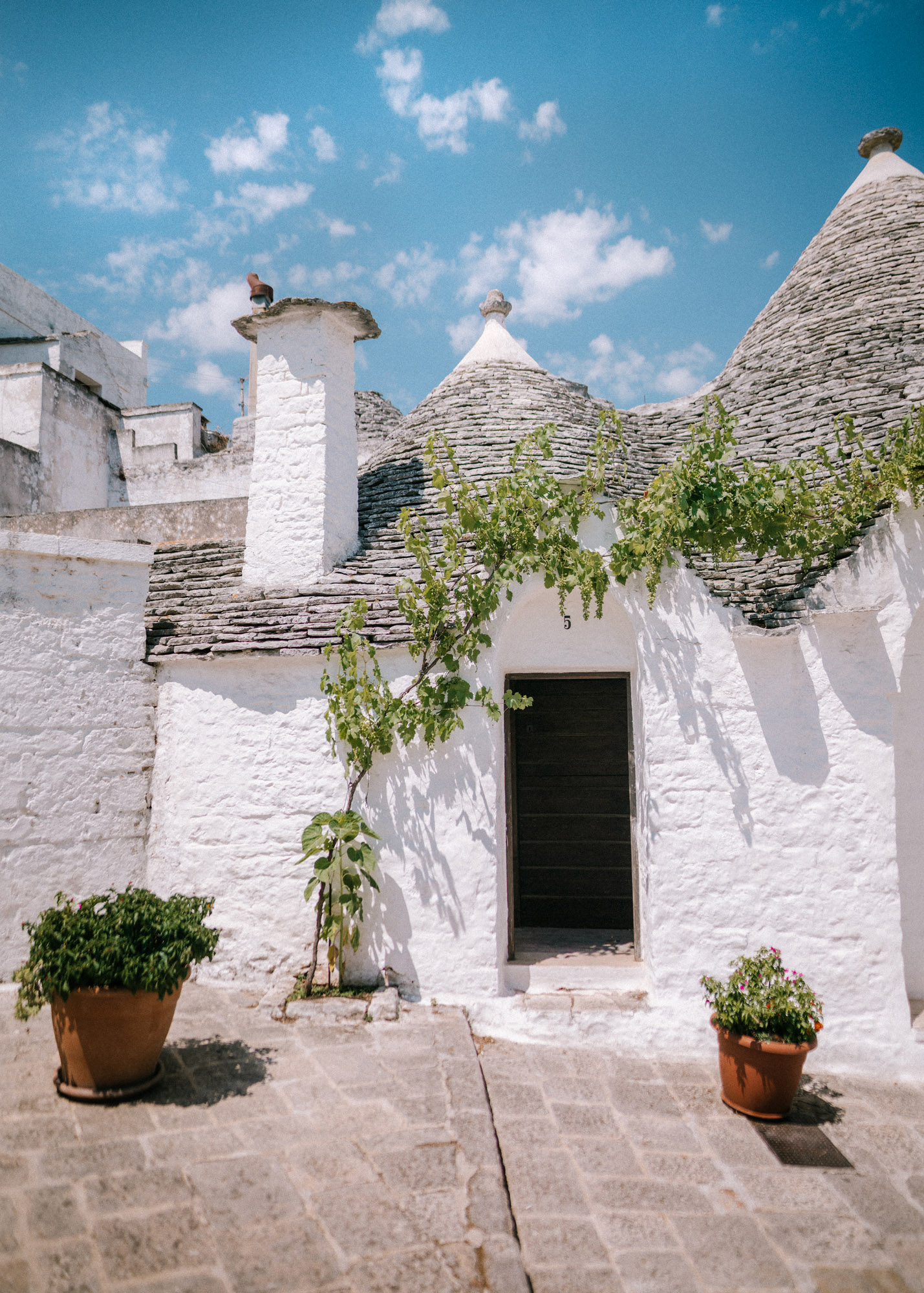
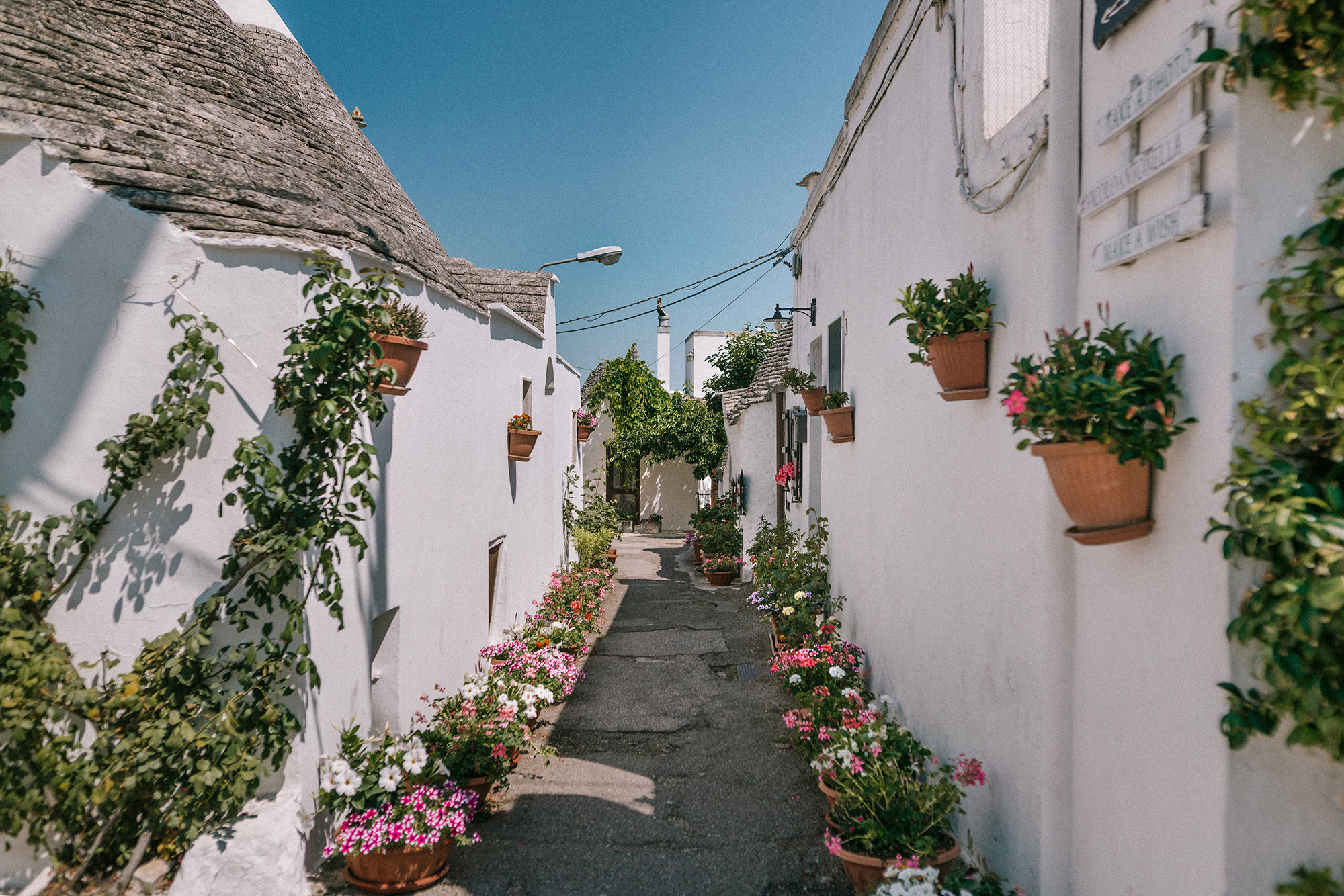
A UNESCO World Heritage site, Alberobello is one of the most visually striking and architecturally unique towns in all of Italy. The town is best known for its trulli - whitewashed limestone dwellings topped with pointed conical roofs, many of which date back centuries. Originally built without mortar, these structures were designed for quick dismantling to evade taxation, but today they form the postcard-perfect heart of Alberobello’s charm.
While the main trulli district, Rione Monti, is filled with shops, small museums, and restaurants, the lesser-visited Aia Piccola area just across the street retains a more residential, quiet atmosphere where locals still live in their trulli homes. Walking the winding alleys here feels like stepping into a storybook village - the pale stone walls, slate-grey rooftops, and cascading flowerpots create a setting that is both serene and cinematic.
Stay in the Countryside
Though it’s tempting to book a room in town, some of the most atmospheric stays are just outside Alberobello, in the surrounding Valle d’Itria countryside. This area is dotted with restored trulli guesthouses and masseria - traditional stone farmhouses that have been converted into boutique accommodations. These properties often offer an authentic, tranquil experience complete with olive groves, private terraces, and even small plunge pools. Staying just outside town gives you the quiet of rural Puglia with easy access to Alberobello’s historic core - a short 5 to 10-minute drive or bike ride brings you right into town. Many countryside stays also include a home-cooked breakfast, often featuring local ricotta, fresh eggs, and homemade jams.
The Atmosphere
Evenings in Alberobello are particularly enchanting. After the day-trippers leave, the narrow streets fall quiet and the trulli are lit by soft golden light, casting a dreamlike glow over the entire town. Dinner on a rooftop or terrace is highly recommended - the elevated views over the clustered rooftops are unforgettable.
Where to Eat
- La Lira Focacciaria: A beloved local bakery known for its rustic focaccia, baked fresh daily and served with a rotating selection of toppings. Simple options like tomato and oregano highlight the quality of the ingredients, while heartier combinations with sausage, mozzarella, or grilled vegetables are perfect for a casual lunch on the go.
- For a more formal meal, several agriturismi in the surrounding countryside offer dinner by reservation, featuring seasonal produce and house-made pasta. Ask your guesthouse host for a local recommendation - these hidden spots often serve the most memorable meals of your trip.
Alberobello is not just a stop for photos - it’s a chance to slow down, experience hyper-local rural life, and sleep under a stone roof that has sheltered generations before you. Whether you wander the quiet streets at sunrise or sip wine beside your trulli’s private garden, this small village offers a kind of magic that lingers long after you leave.
Add-On: Amalfi Coast For Iconic Seaside Luxury
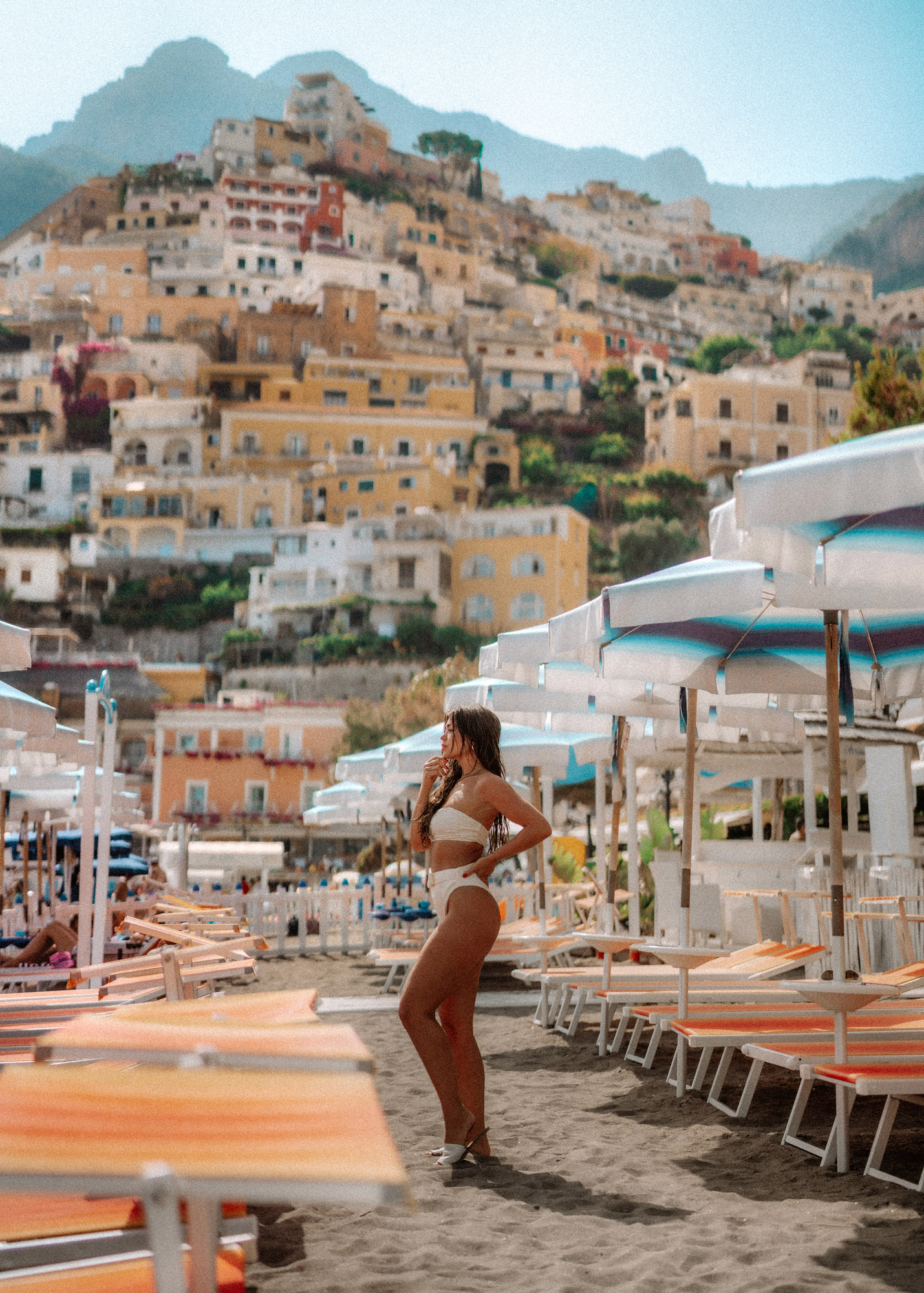
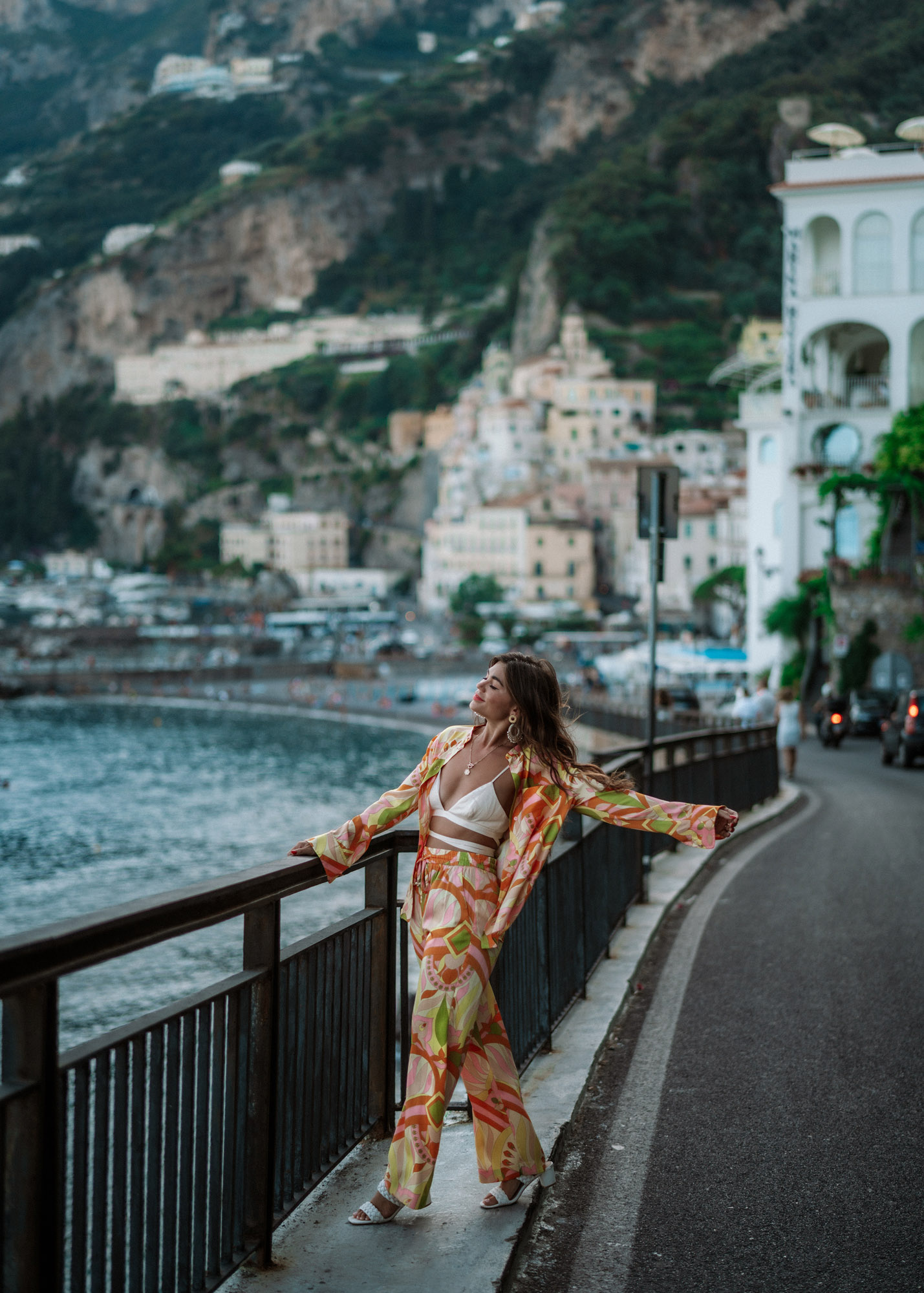
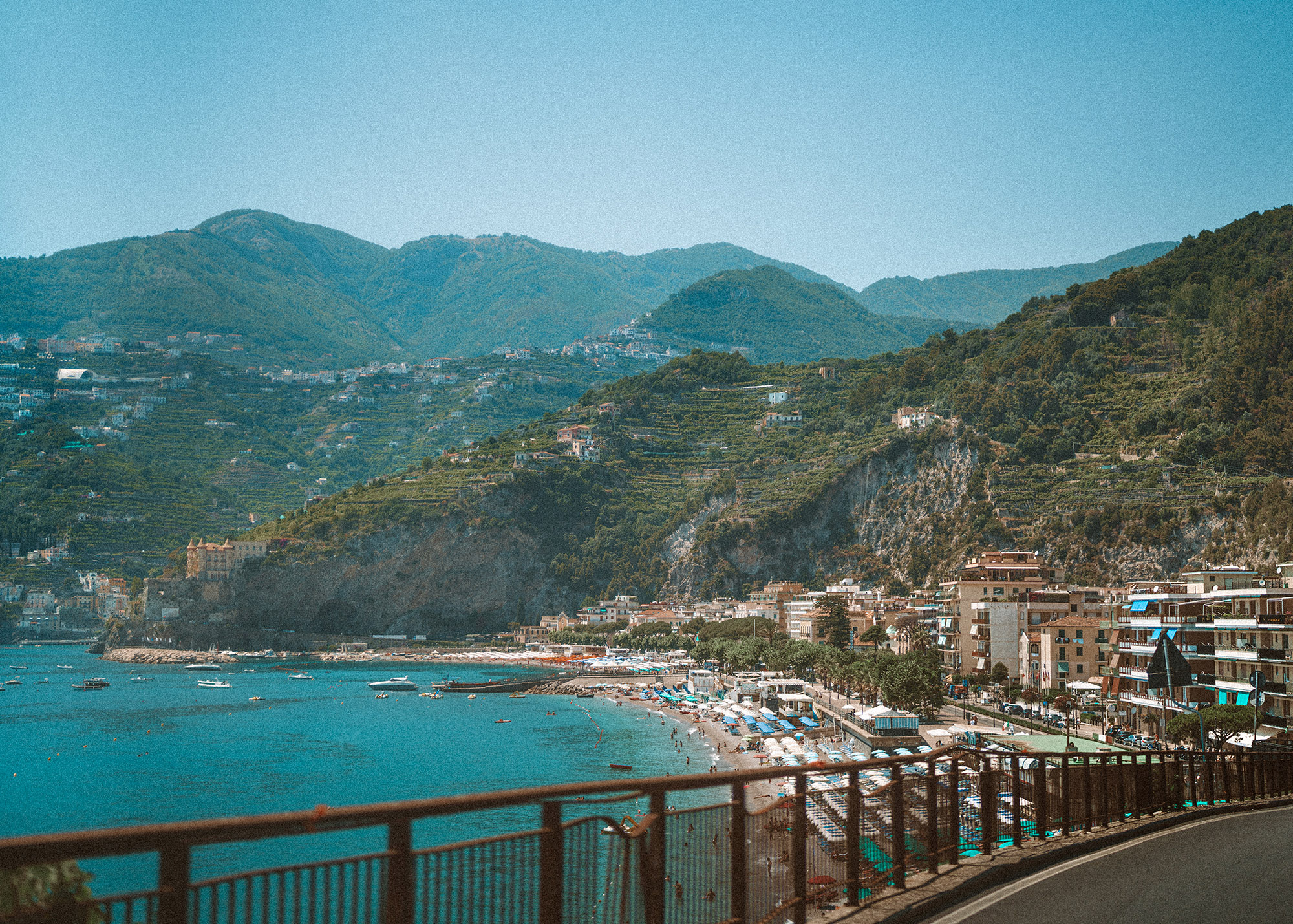
Instead of circling back around to Bari to end your trip, you can continue on to the Amalfi Coast and depart from Naples to add in the iconic beaches and towns of Positano and Amalfi - which is exactly what we did!
After days immersed in the quiet rhythms of Puglia’s olive groves and limestone towns, the Amalfi Coast offers a dramatic shift in both geography and energy. The winding cliff roads, pastel-colored villages clinging to steep rock faces, and sweeping views of the Tyrrhenian Sea create one of Italy’s most iconic landscapes. Whether you stay in Positano, Amalfi, or Ravello, each town offers its own rhythm - from glamorous beach clubs to hilltop gardens and centuries-old cathedrals.
Where to Stay
Accommodations range from five-star hotels built into the cliffs to family-run guesthouses tucked into narrow lanes. For the full Amalfi experience, consider booking a room with a sea view and a private terrace. In Positano, expect vertical living - lots of stairs, but the reward is waking up to sun-drenched views of the harbor and cascading bougainvillea. In Ravello, the atmosphere is quieter and more refined, with lush gardens and sweeping terraces that seem to hover above the sea. Amalfi town itself offers a balance between the two - central, walkable, and historically significant, but still full of coastal charm.
Things to Do
- Spend a day on the water: One of the best ways to see the Amalfi Coast is from a boat. Private or small-group charters offer the chance to swim in quiet coves, explore sea caves, and enjoy uninterrupted views of the cliffs and towns from below.
- Visit the gardens of Villa Cimbrone or Villa Rufolo in Ravello: Both estates offer manicured gardens, Moorish architecture, and some of the most breathtaking panoramas on the coast.
- Walk the Path of the Gods (Il Sentiero degli Dei): For those seeking a more active experience, this moderate hike connects the hamlet of Bomerano to Nocelle above Positano, with sweeping views throughout.
- Explore town by town: Positano is known for fashion boutiques and romantic restaurants, while Amalfi offers a majestic cathedral and a more lived-in feel. Ravello is ideal for art, music, and quiet luxury.
Dining on the Coast
Seafood is the star here, often served simply with lemon and olive oil. Expect menus filled with grilled octopus, fresh anchovies, lemon-scented pastas, and local wines that pair effortlessly with the coastal air. Dinners here are drawn out and unhurried - best enjoyed on terraces overlooking the sea as the sky shifts from gold to violet.
Travel Notes
Driving the Amalfi Coast road is not for the faint of heart, especially in summer, with tight turns, cliffside drop-offs, and congestion. If you’re traveling by rental car from Puglia, consider parking it at your hotel and relying on ferries or local drivers during your stay. The SITA bus system and water taxis connect all major towns, though travel times can vary depending on traffic and season.
Ending your southern Italy journey here adds a layer of indulgence and spectacle - the kind that balances perfectly with the quieter, rural tones of Puglia. After walking ancient paths in Matera and sleeping under trulli roofs in Alberobello, watching the sunset from a Positano terrace feels like the kind of cinematic finale only Italy could provide.
The Preserved History of Pompeii: A Museum the size of a city

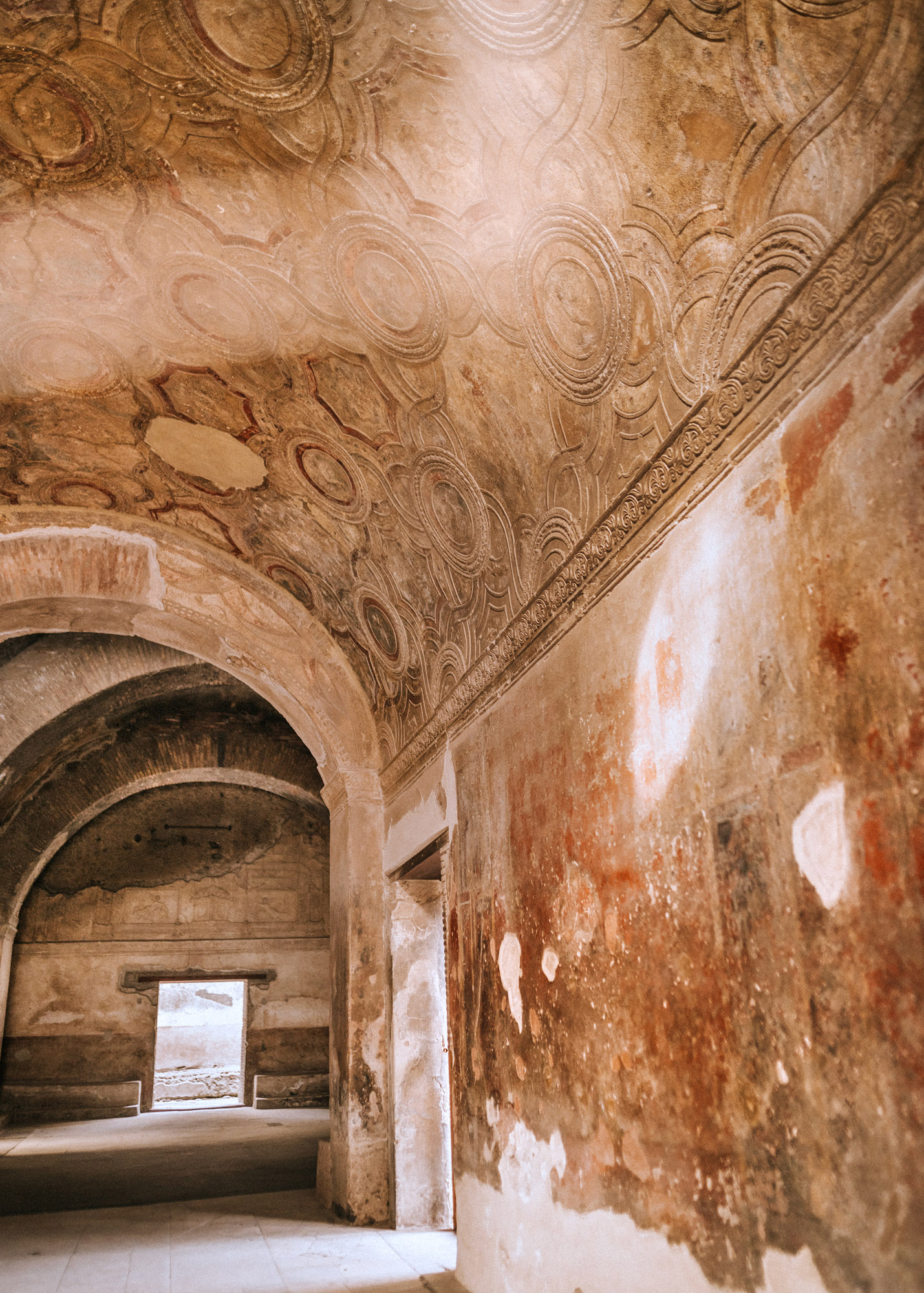

If you are departing from Naples, a visit to the Pompeii Archaeological Park is an absolute must-do.
Few places in the world offer such an unfiltered window into ancient life as Pompeii, the Roman city buried by the catastrophic eruption of Mount Vesuvius in 79 AD. Walking through its preserved streets, villas, bathhouses, and marketplaces, you’re not so much visiting ruins as stepping into a once-vibrant city paused in time. The scale, detail, and sheer emotional weight of the site make it a must-see when traveling between Puglia and the Amalfi Coast.
Despite its popularity, the archaeological park remains incredibly immersive if you approach it intentionally. Spread across over 170 acres, Pompeii is best explored in sections rather than trying to rush through the entire site. With uneven volcanic stone streets and little shade, plan to arrive early and wear proper shoes — this is a place best taken in slowly, and with some advance planning.
What to See
- Villa of the Mysteries: Located just outside the main city walls, this remarkably preserved villa features frescoes that rival any museum — a rare look at Roman domestic life and private worship.
- The Forum and Temples: Once the civic heart of the city, the forum offers panoramic views of Vesuvius framed by ancient columns and temples to Jupiter and Apollo.
- Bathhouses and Bakeries: Public baths with intricate mosaics and ancient bakeries still containing carbonized loaves of bread are everyday reminders of how advanced Roman infrastructure truly was.
- Plaster Casts of Victims: Perhaps the most haunting element of Pompeii, these casts were made by filling voids left in the ash with plaster, capturing the final moments of those who died in the eruption.
Getting There
From the Amalfi Coast, reaching Naples is straightforward whether you're driving or using public transit. By car, the coastal route offers dramatic views but can be slow and winding — allow 1.5 to 2.5 hours depending on traffic and your starting point. A more efficient option is to drive inland toward Vietri sul Mare and join the A3 autostrada north to Naples.
If you’re traveling by public transport, take a bus or ferry from your Amalfi Coast base (such as Positano or Amalfi) to Salerno, then transfer to a regional train for the final stretch into Napoli Centrale. This combination avoids the worst of the coastal traffic while offering a scenic and relaxed journey.
Tickets and Timing
Purchase your tickets online in advance to skip the lines, especially during high season. General admission is around €18, though guided tours or audio guides are highly recommended for context. The site opens at 9:00 a.m. and tends to be much hotter and busier by midday, so aim to arrive right at opening if possible. We didn't arrive until the early afternoon and stayed until the park had to physically kick us out - I wish I had more time and am dying to return.
Tips for Visiting
- Bring water, sunscreen, and a hat — there is minimal shade inside the site.
- The walking is extensive and uneven, so sneakers or hiking sandals are essential.
- If you’re short on time, prioritize the western section of the city, where the most famous villas and public buildings are located.
- Nearby, the Pompeii Archaeological Museum in Naples houses many of the original artifacts, statues, and frescoes that were removed for preservation.
10-Day Puglia Italy Itinerary
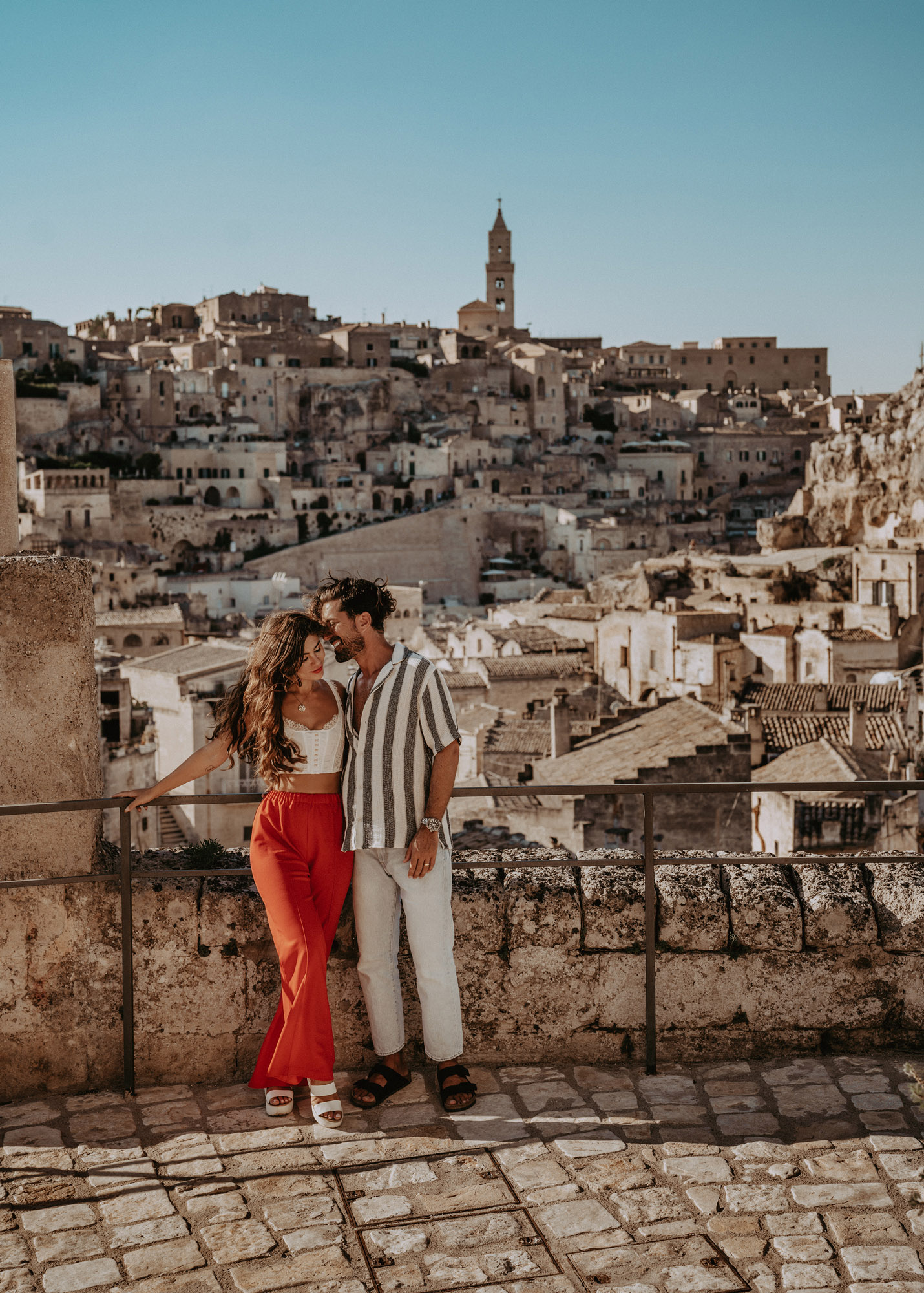
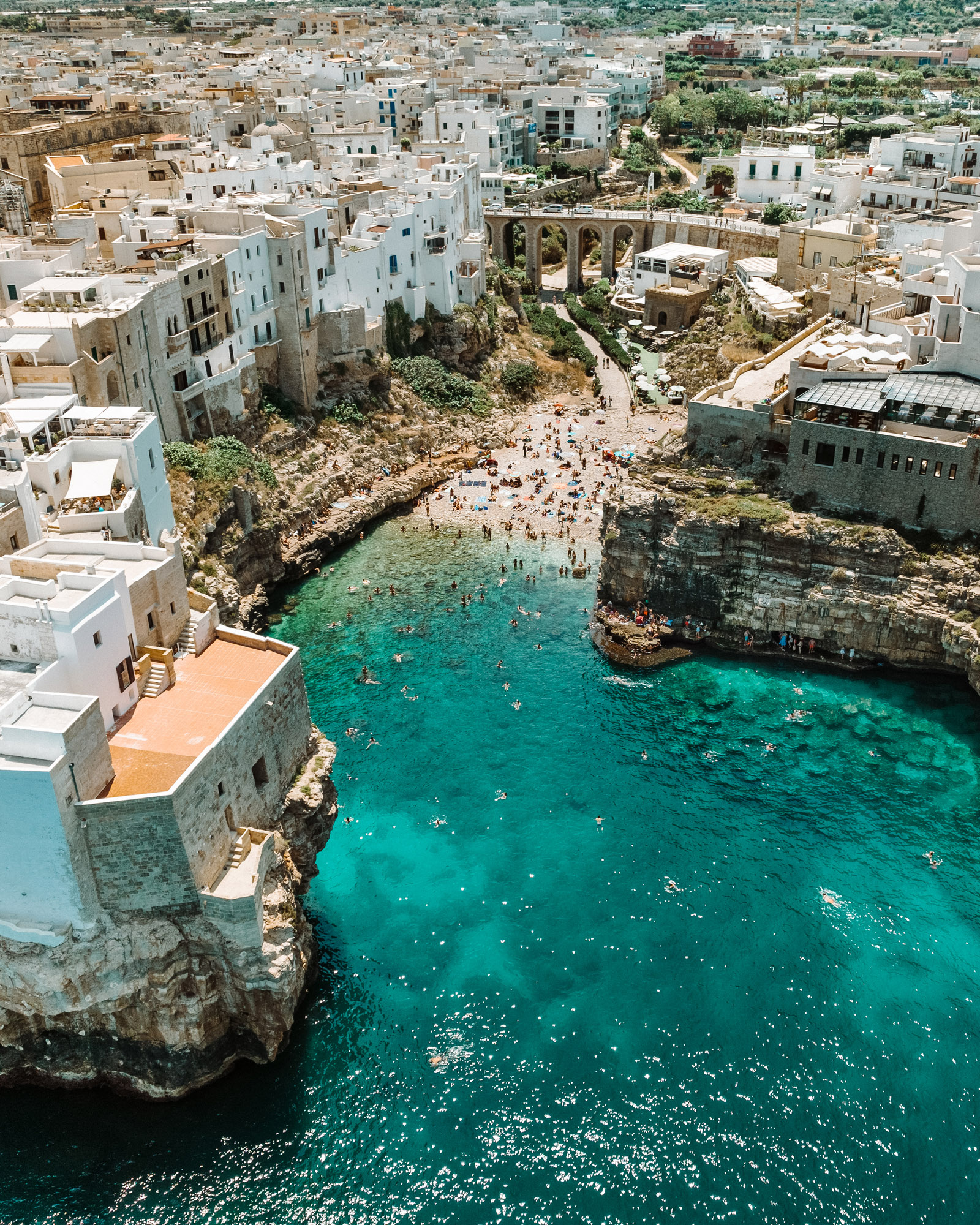
Days 1–4: Ostuni or Nearby Masseria (Base 1)
- Day 1: Arrive in Ostuni, “The White City.” Lunch at Madee, then explore the charming old town with its iconic whitewashed buildings.
- Day 2: Spend the day at Punta Prosciutto beach. Rent chairs (€20 for two), enjoy Aperol Spritz (€6), prosciutto sandwiches, and relax by the sea. Visit the Sarcofagi del Re marble tombs near the beach if weather permits.
- Day 3: Explore nearby towns like Cisternino or Monopoli for quaint streets, local markets, and fresh seafood. Dinner back in Ostuni or your masseria.
- Day 4: Visit the castle park (Parco del Castillo) in Ostuni or spend a leisurely day relaxing at your masseria, savoring Puglian cuisine and countryside vibes.
Days 5–7: Alberobello (Base 2)
- Day 5: Drive to Alberobello. Explore the famous trulli houses, especially in the Aia Piccola district. Lunch at La Lira Focacciaria to try regional focaccia varieties. Evening stroll through the quiet streets soaking in the unique architecture.
- Day 6: Day trip to Polignano a Mare. Swim in turquoise coves, lunch at Olio Su Pane for classic paninis, and savor pistachio gelato at Crema Café. Return to Alberobello for a relaxed evening.
- Day 7: Optional day trip to Locorotondo or Martina Franca to experience baroque architecture and local wines. Alternatively, enjoy a slow day in Alberobello.
Days 8–10: Matera (Base 3)
- Day 8: Drive to Matera. Explore the UNESCO-listed Sassi cave dwellings and ancient stone streets. Enjoy dinner at L’Abbondanza Lucana for authentic local dishes.
- Day 9: Morning hike across the ravine to the prehistoric cave dwellings near Baccanti restaurant. Lunch at Trattoria del Caveoso. Afternoon shopping and visit Centro Estetico I Love Nails And Beauty for a relaxing mani-pedi. Sunset drinks with a view at Kiev Bistrot.
- Day 10: Indulge in a spa day at Aquatio Cave Luxury Hotel, featuring hydrotherapy baths and an olive oil scrub massage. Prepare for departure or continue your journey.
Make it 2 Weeks with an Amalfi Coast Add-On:
Day 11: Travel from Matera to Amalfi Coast
- Depart early from Ostuni and drive (approximately 3 - 3:30 hours) or take a combination of train and car/bus to the Amalfi Coast.
- Arrive in your chosen town (Positano, Amalfi, or Ravello) in the afternoon.
- Enjoy a leisurely evening with aperitivo and dinner overlooking the Mediterranean.
Days 12–14: Amalfi Coast Exploration & Pompeii Visit
- Day 12: Relax on the beach or take a boat tour along the coast. Visit Positano’s cliffside shops or Ravello’s gardens and villas.
- Day 13: Explore Amalfi town, visit the Duomo, or hike the Path of the Gods for breathtaking coastal views. Enjoy a sunset dinner with fresh seafood.
- Day 14: Early morning drive to Pompeii (about 1.5 hours). Spend 2–3 hours touring the ancient archaeological site — the remarkably preserved ruins of this Roman city offer a unique window into history.
- After Pompeii, head to Naples International Airport (roughly 30–40 minutes from Pompeii) for your departure or overnight stay if your flight is the next day.
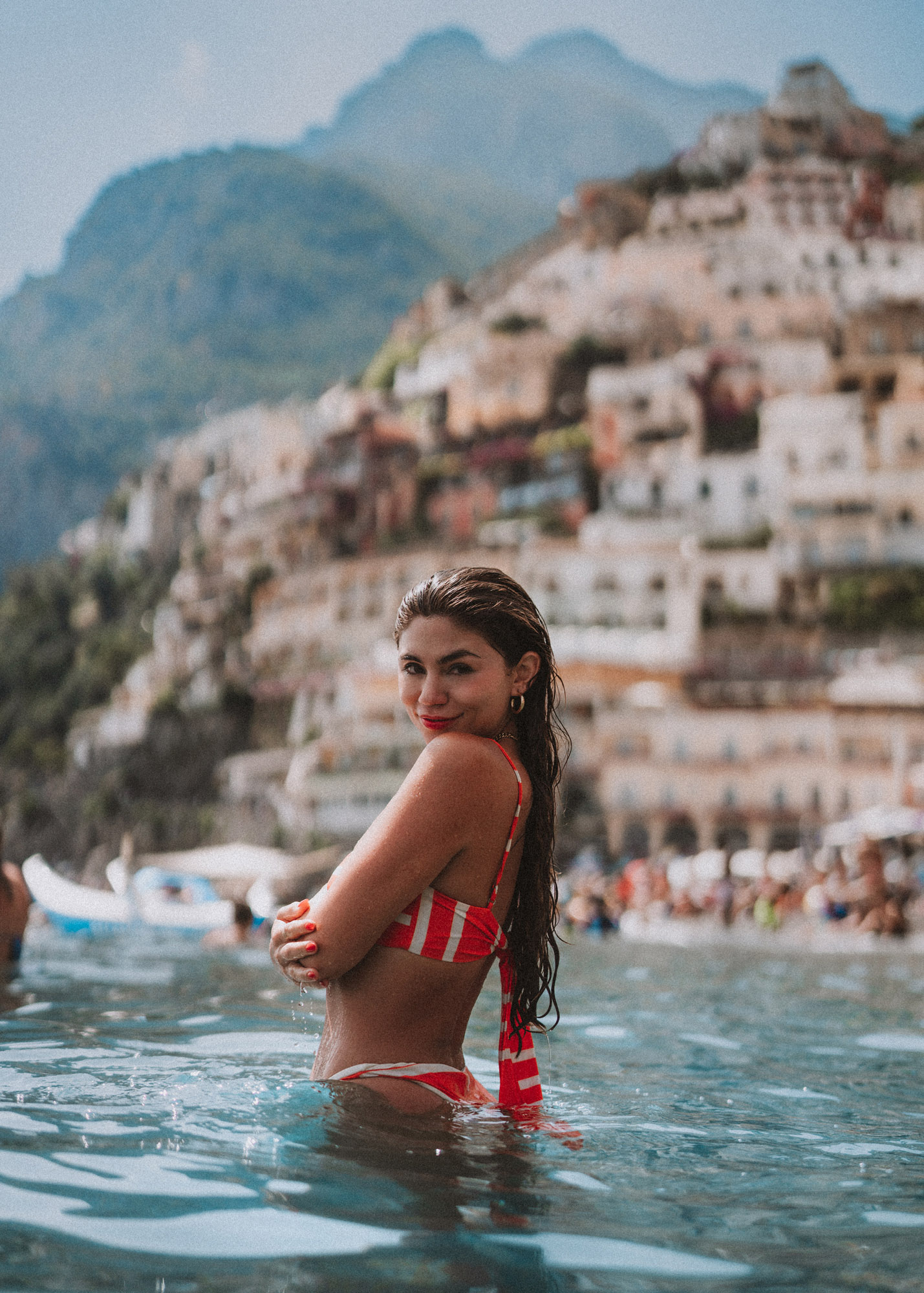

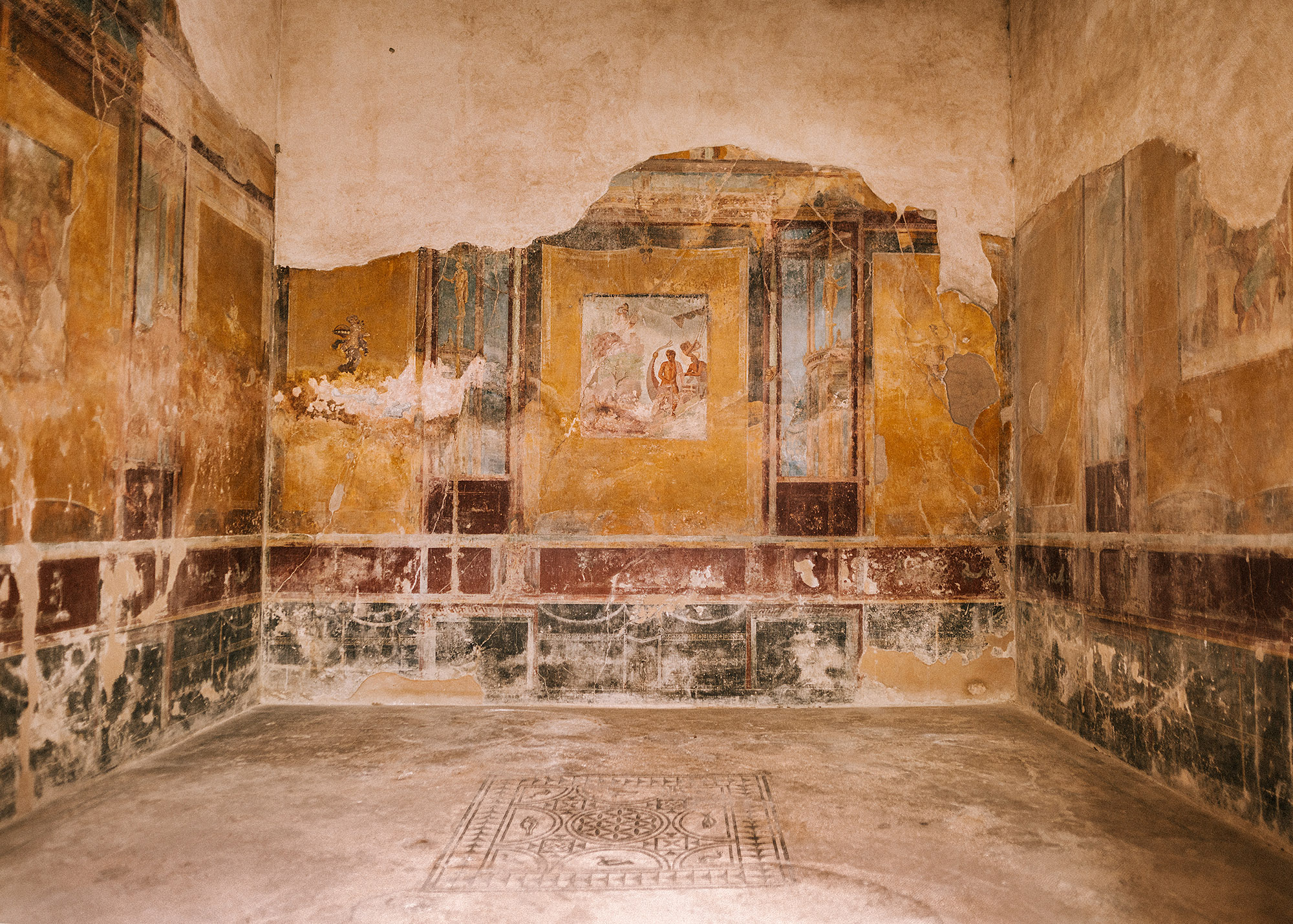
Like this post? Pin it for later and share it with others!

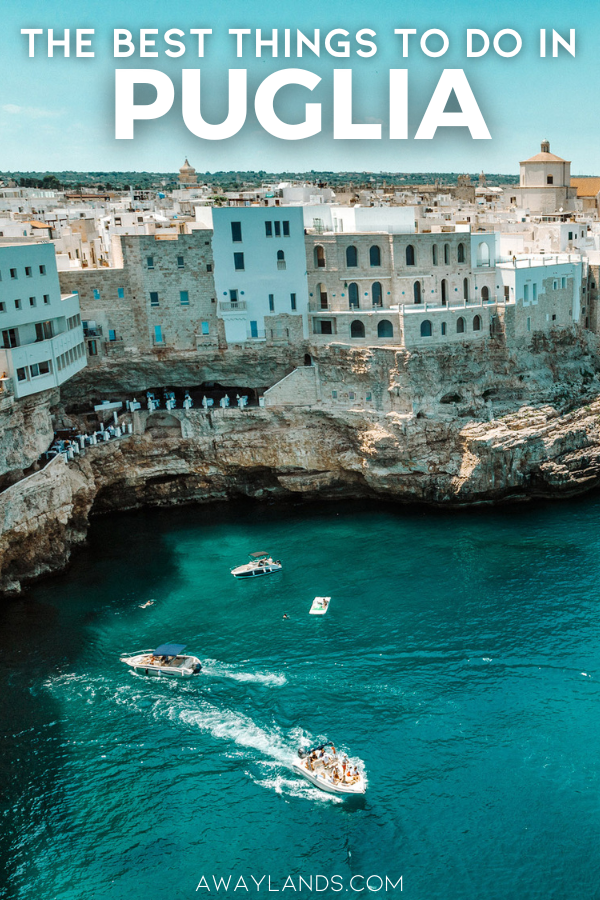
xx


